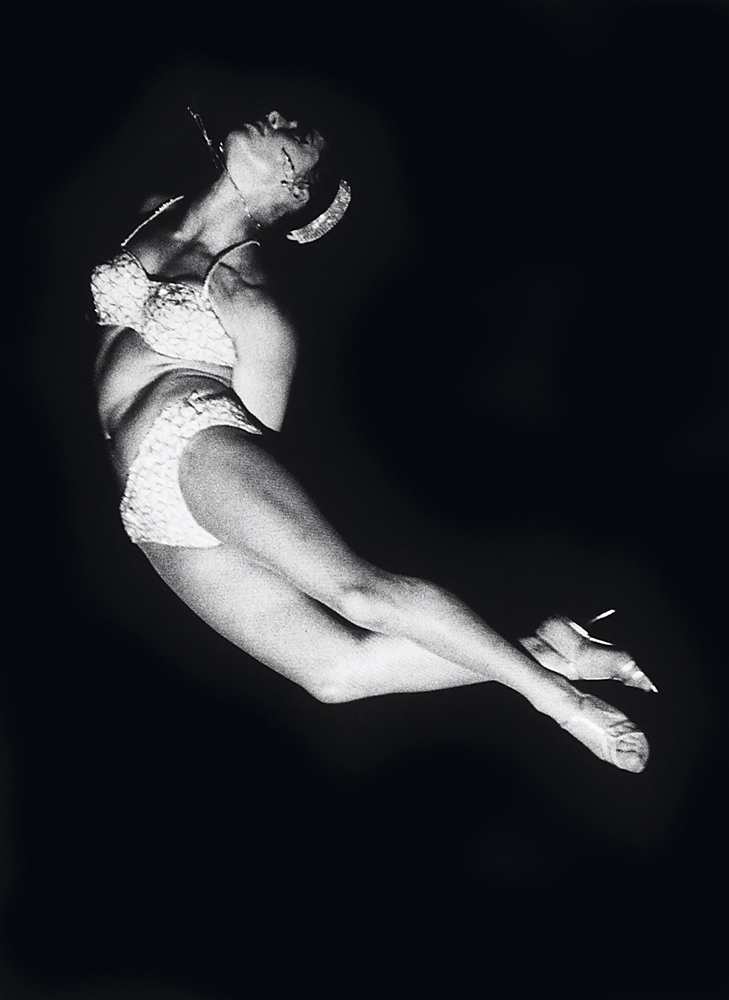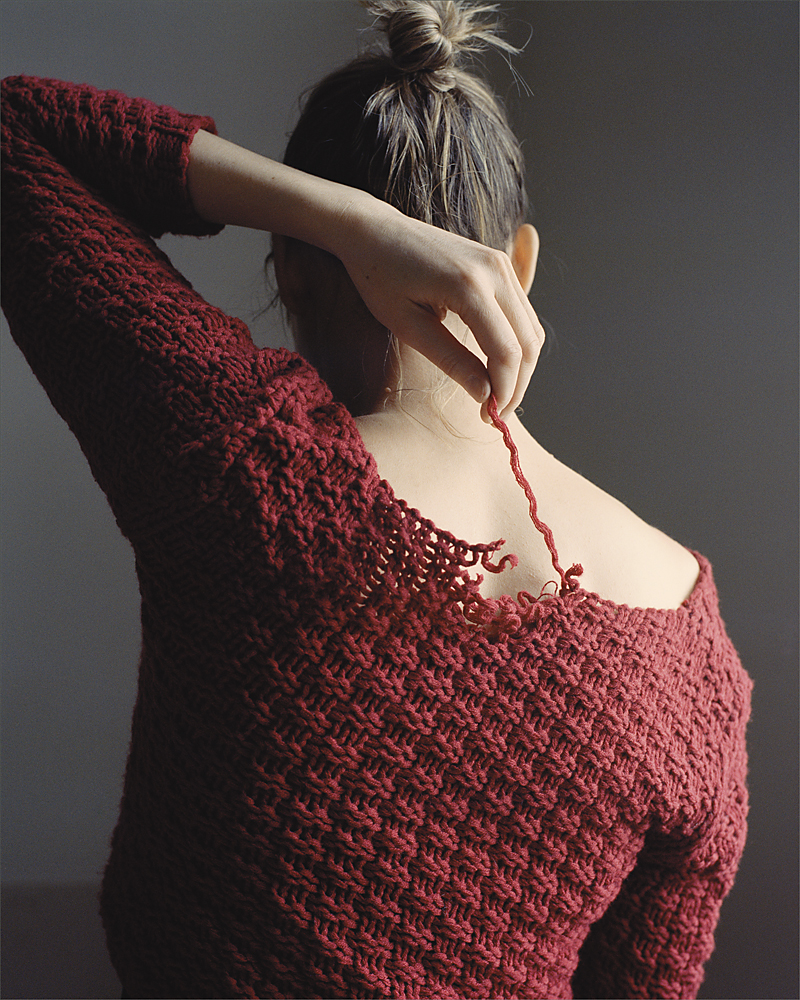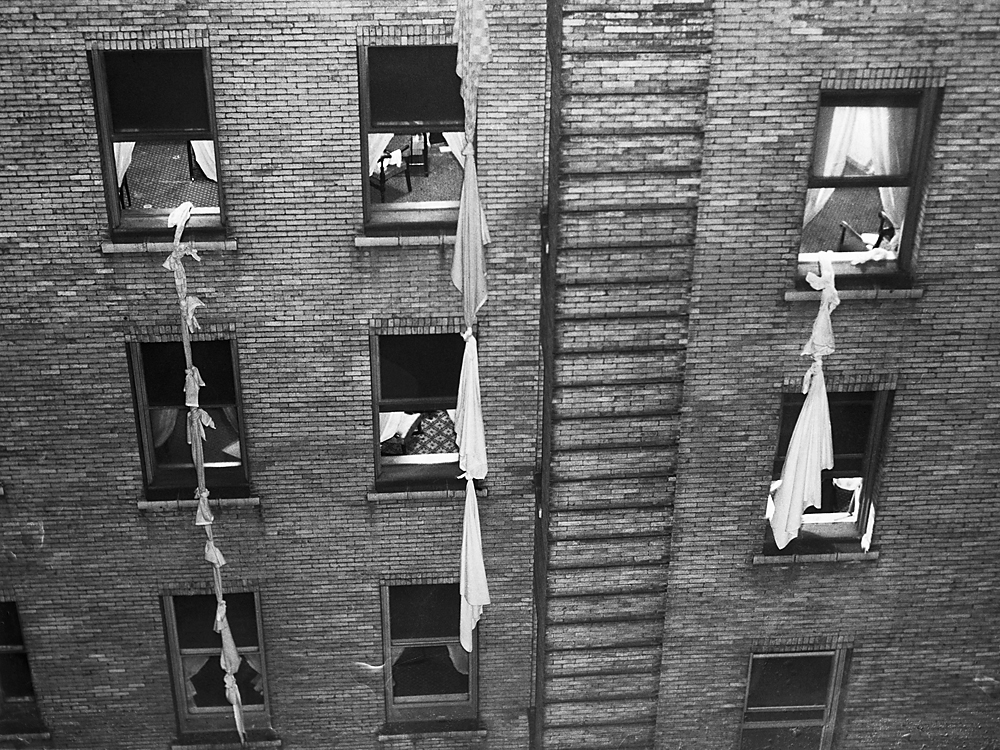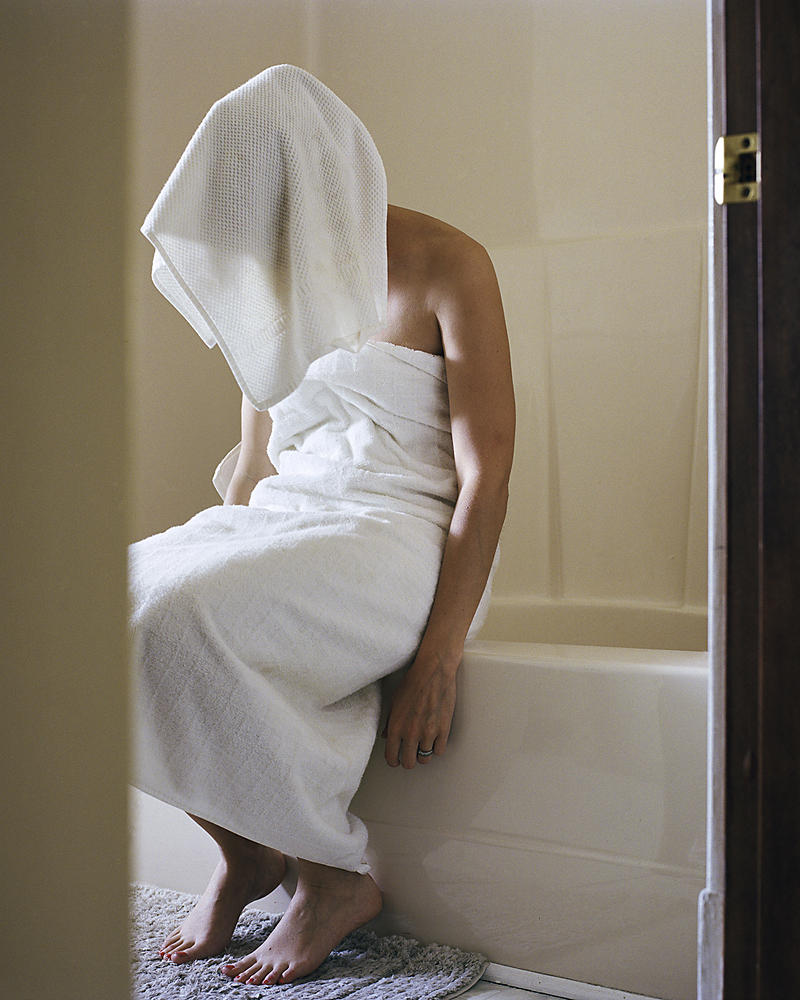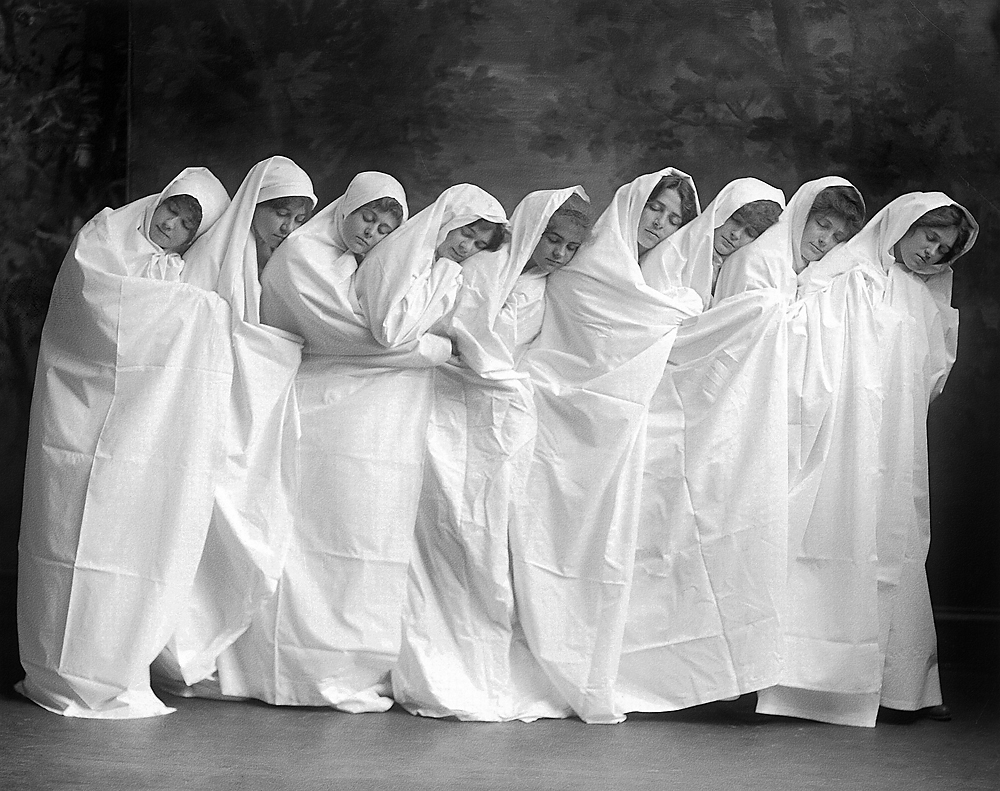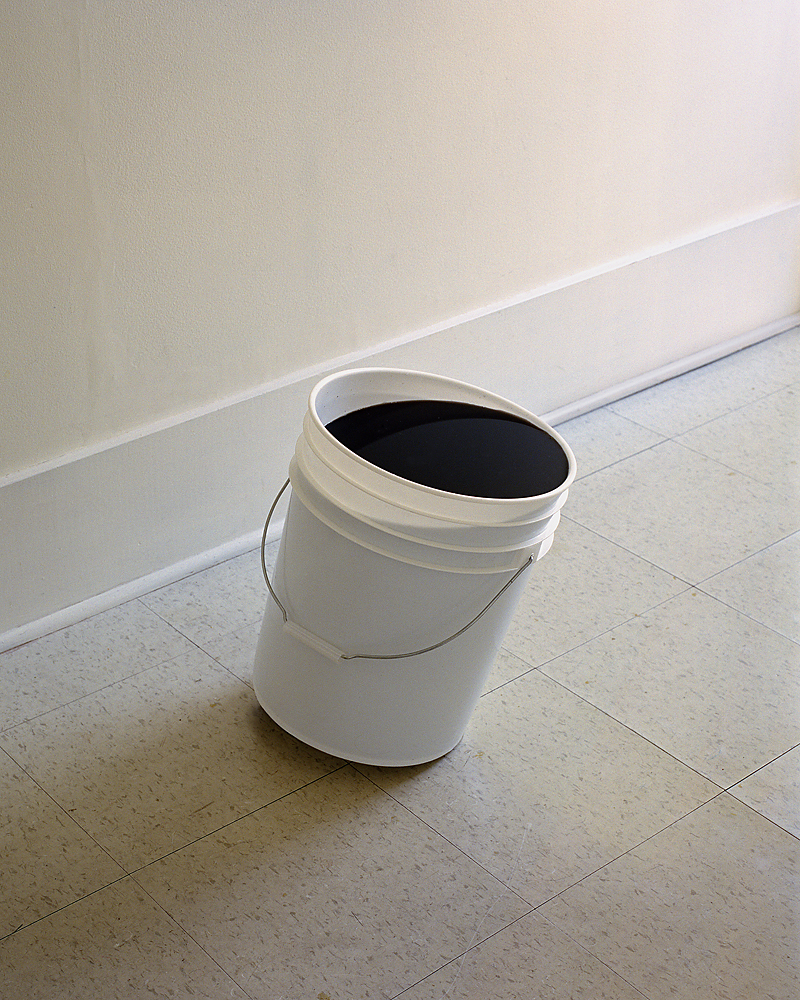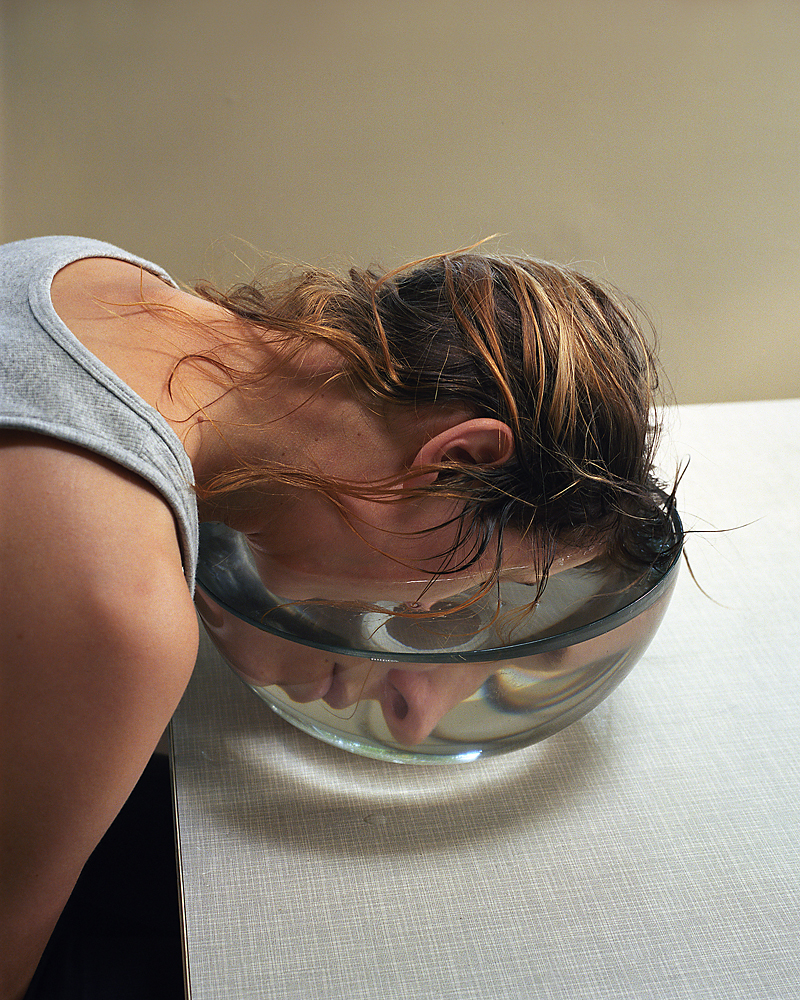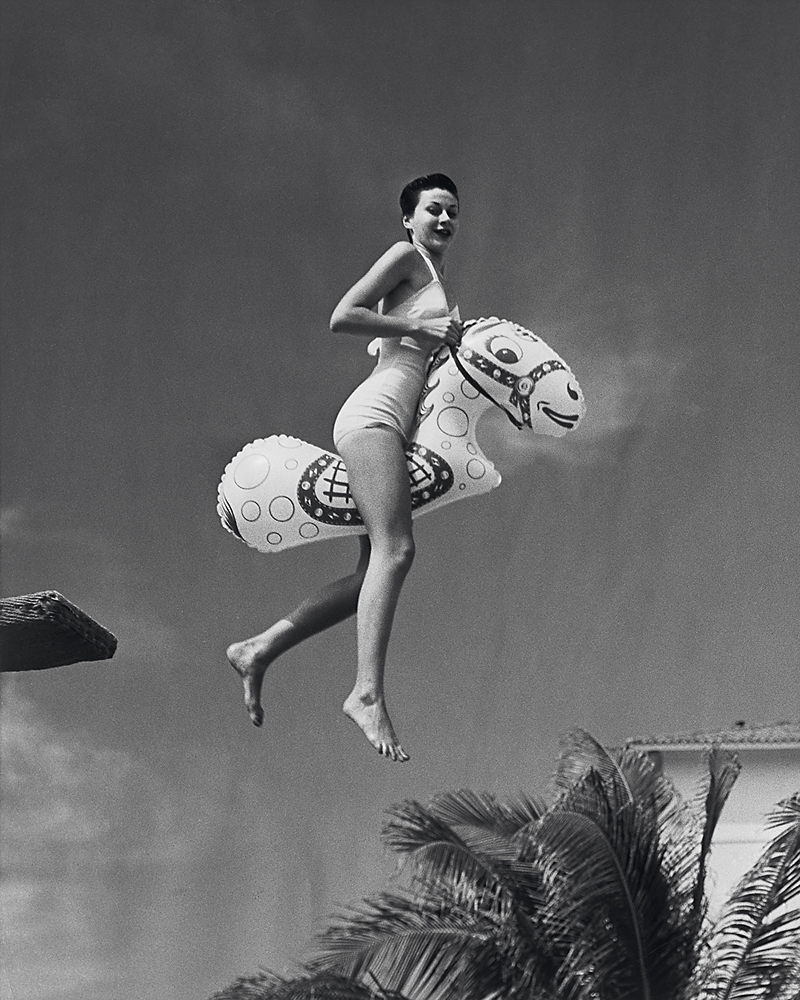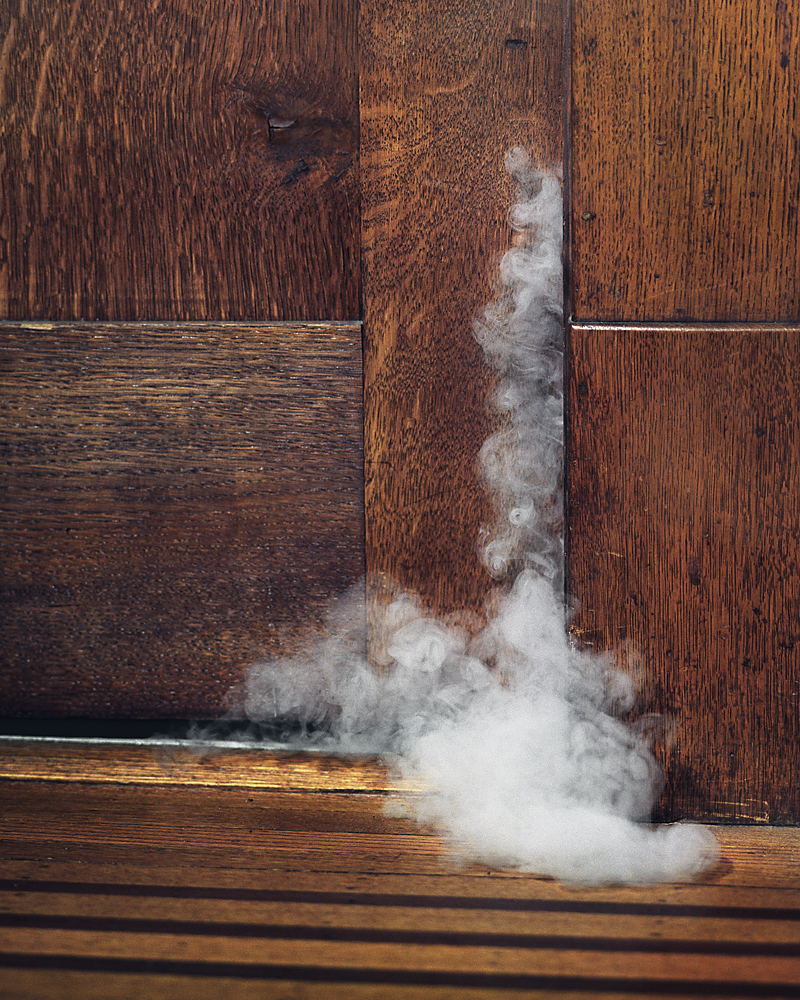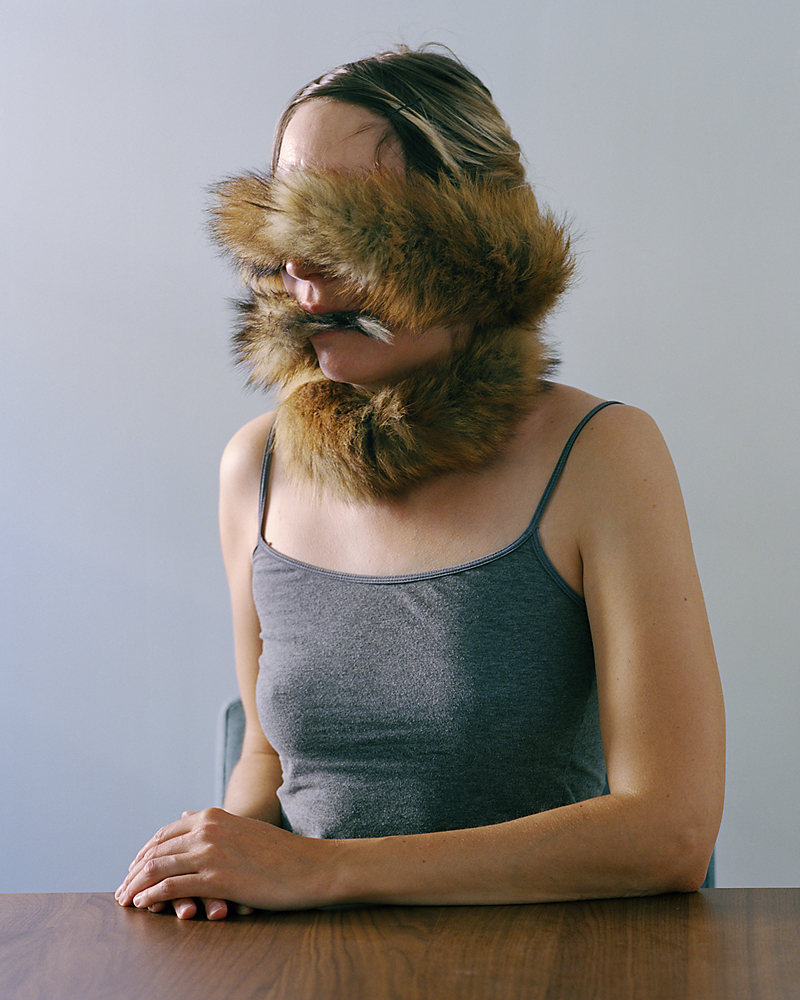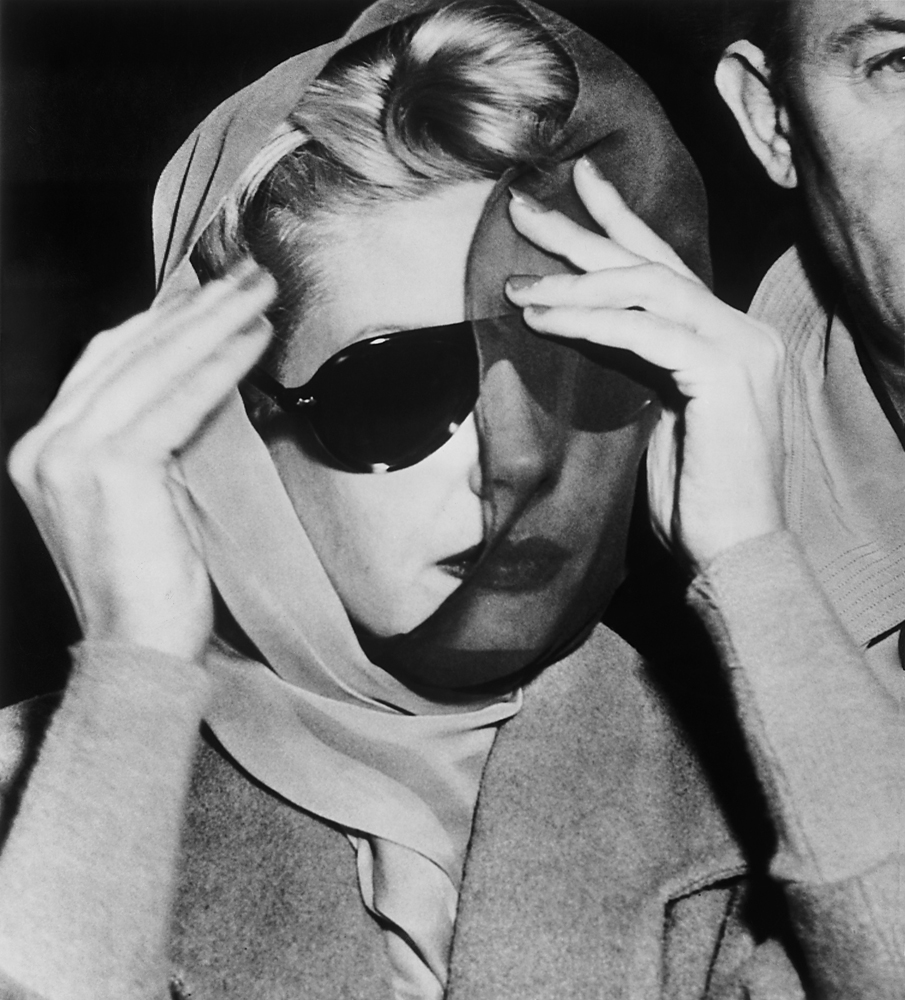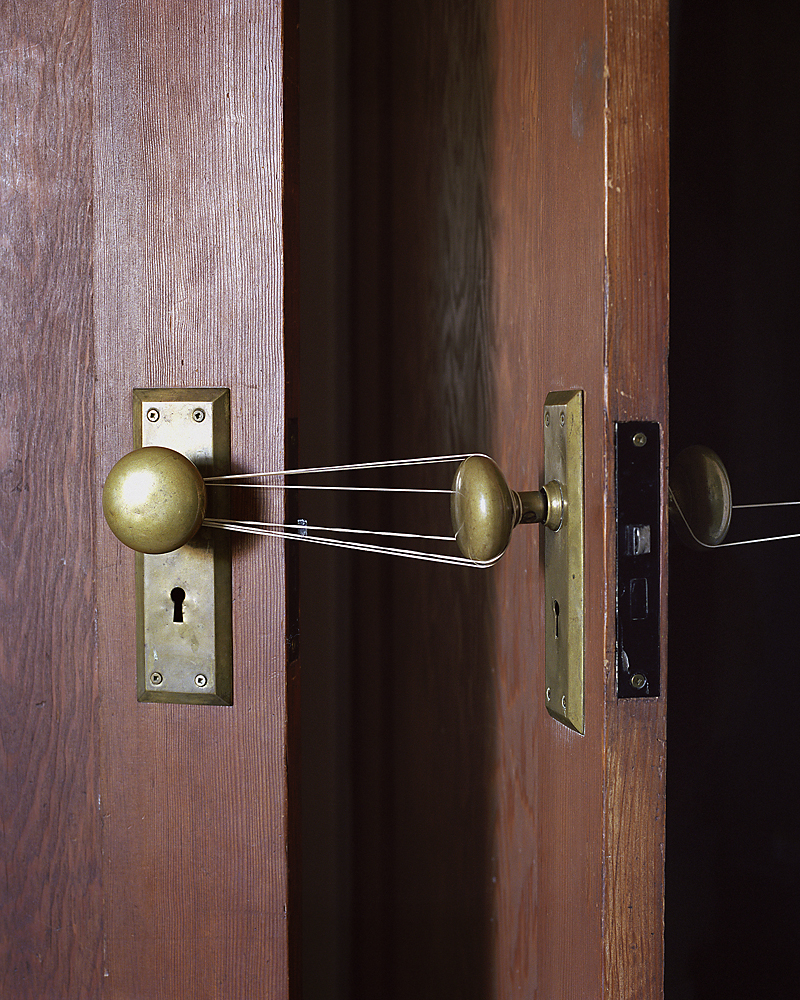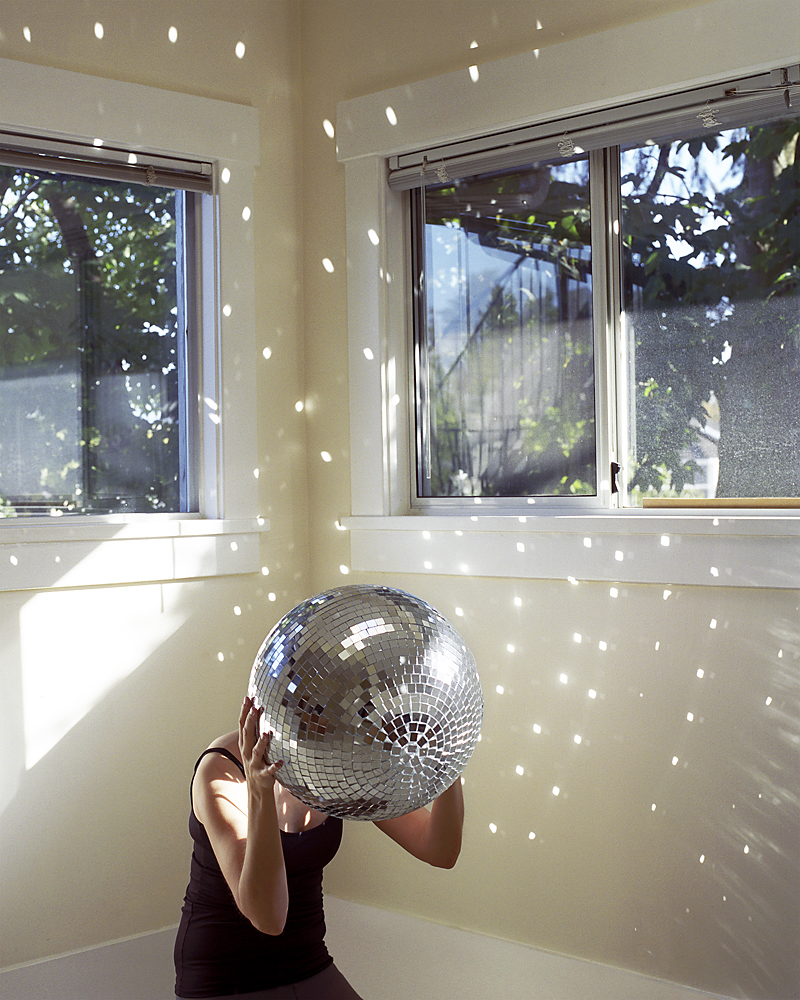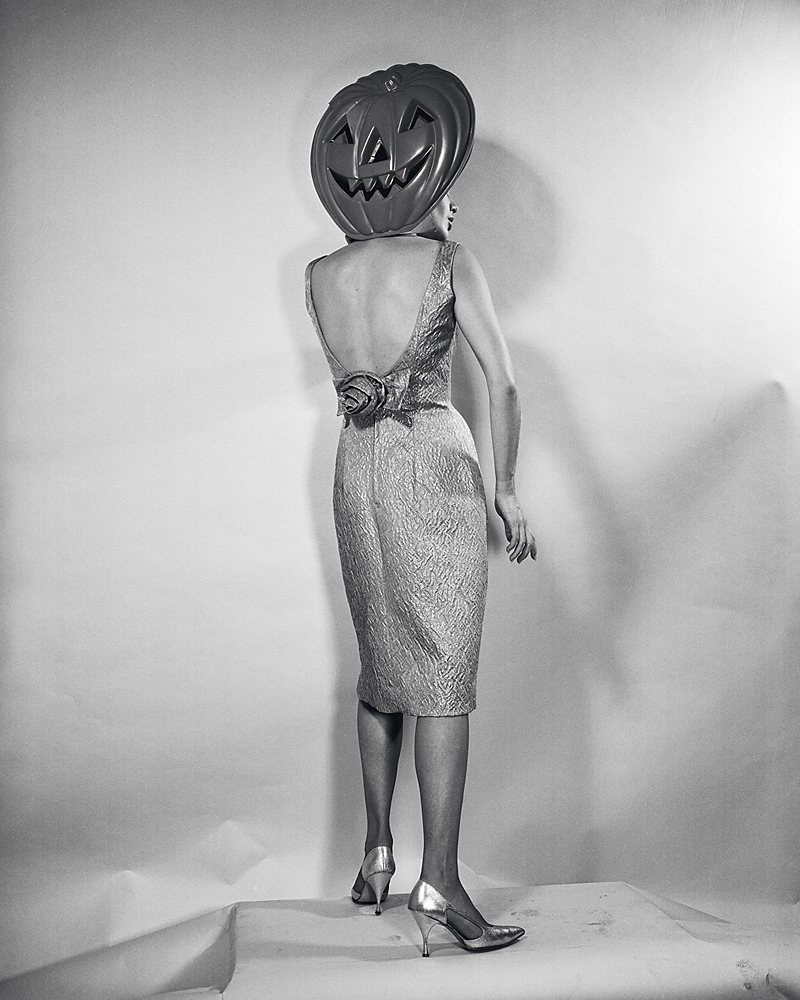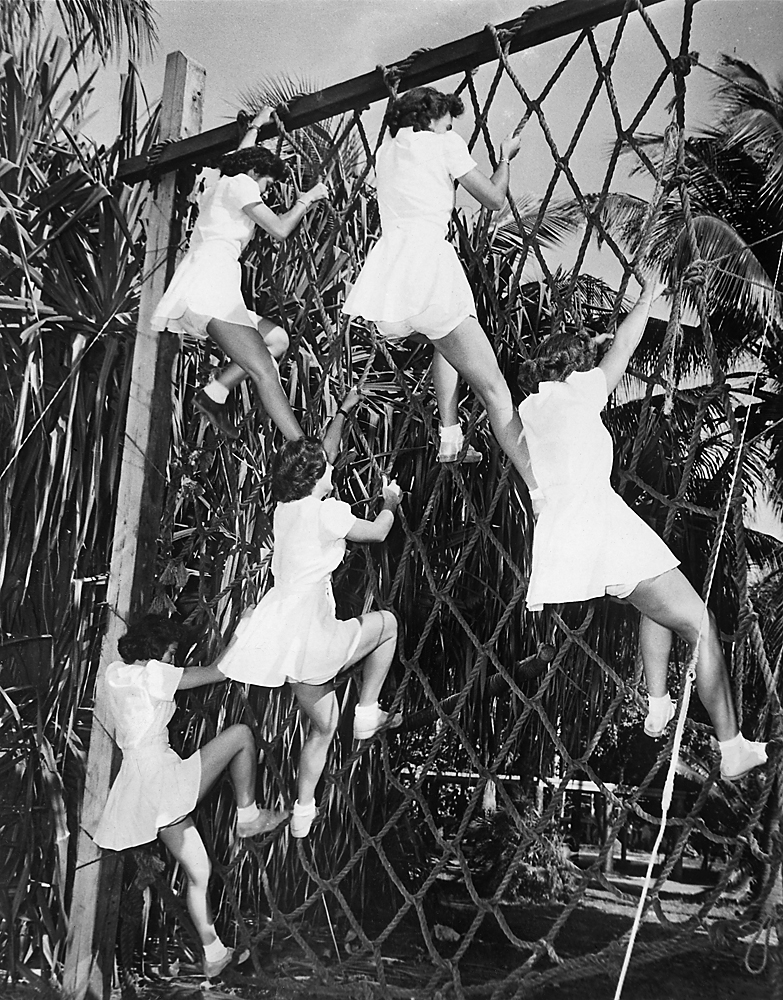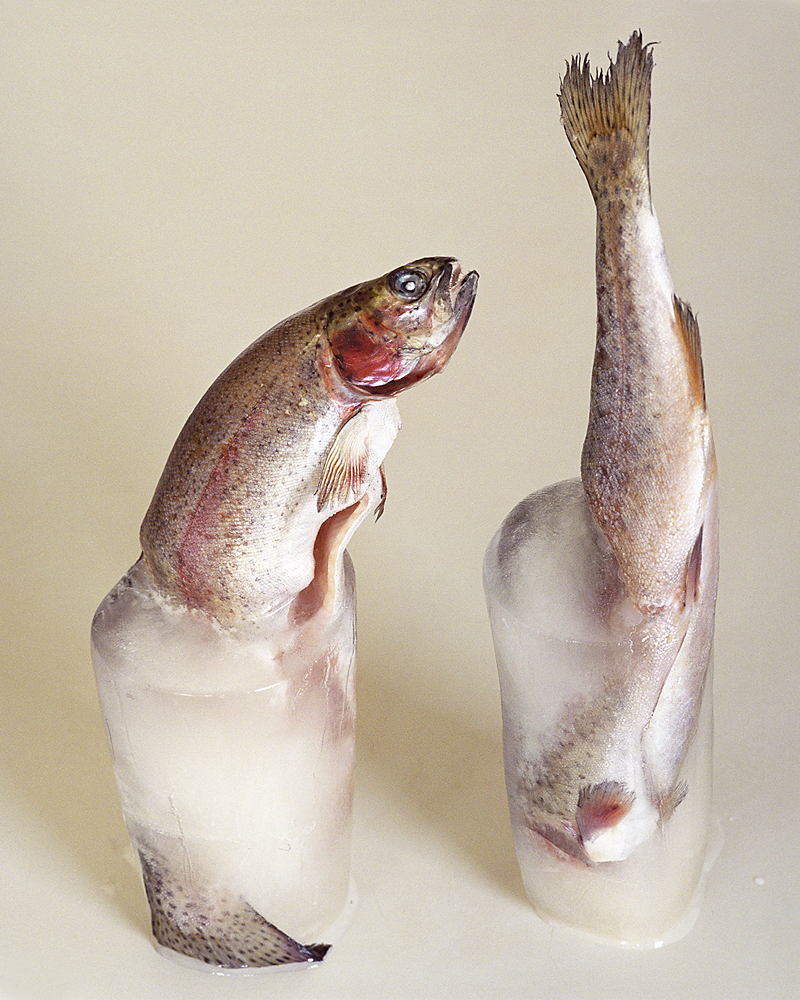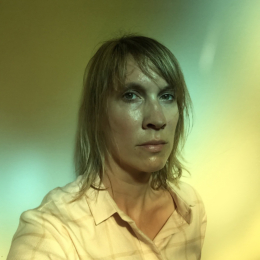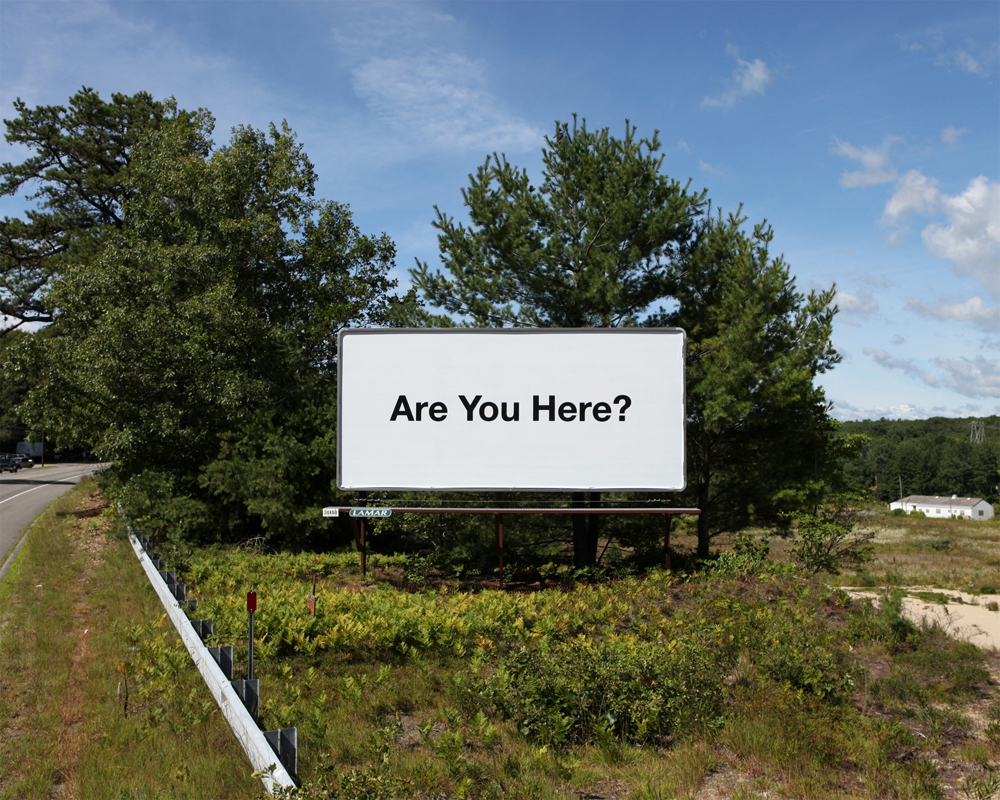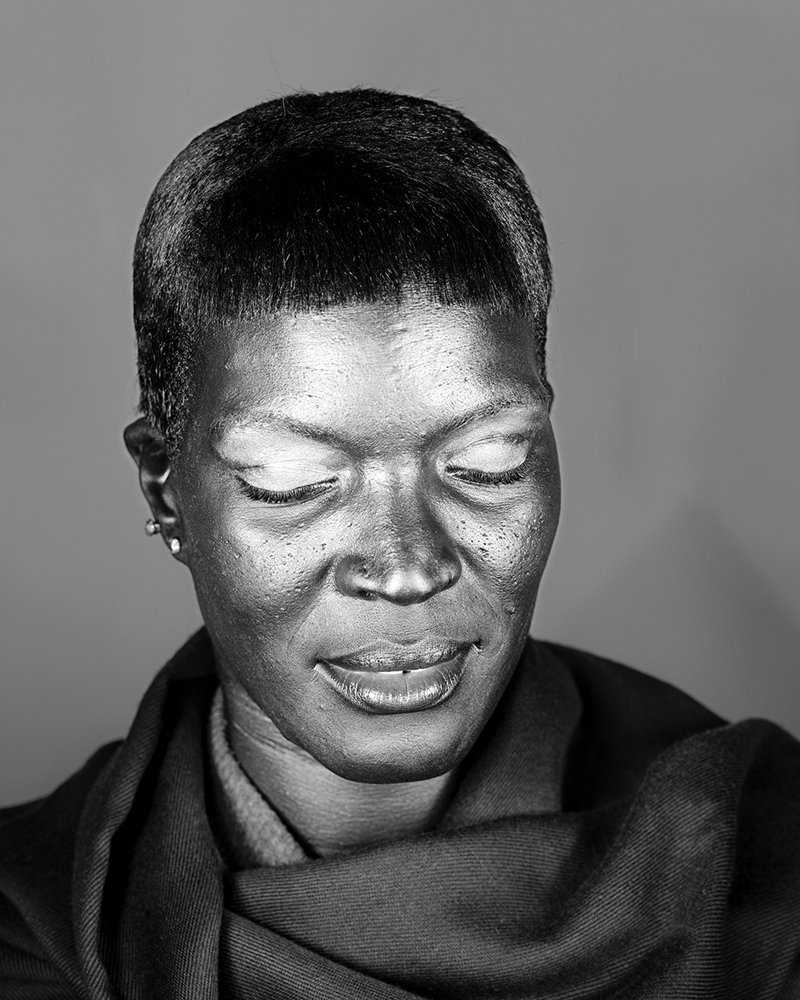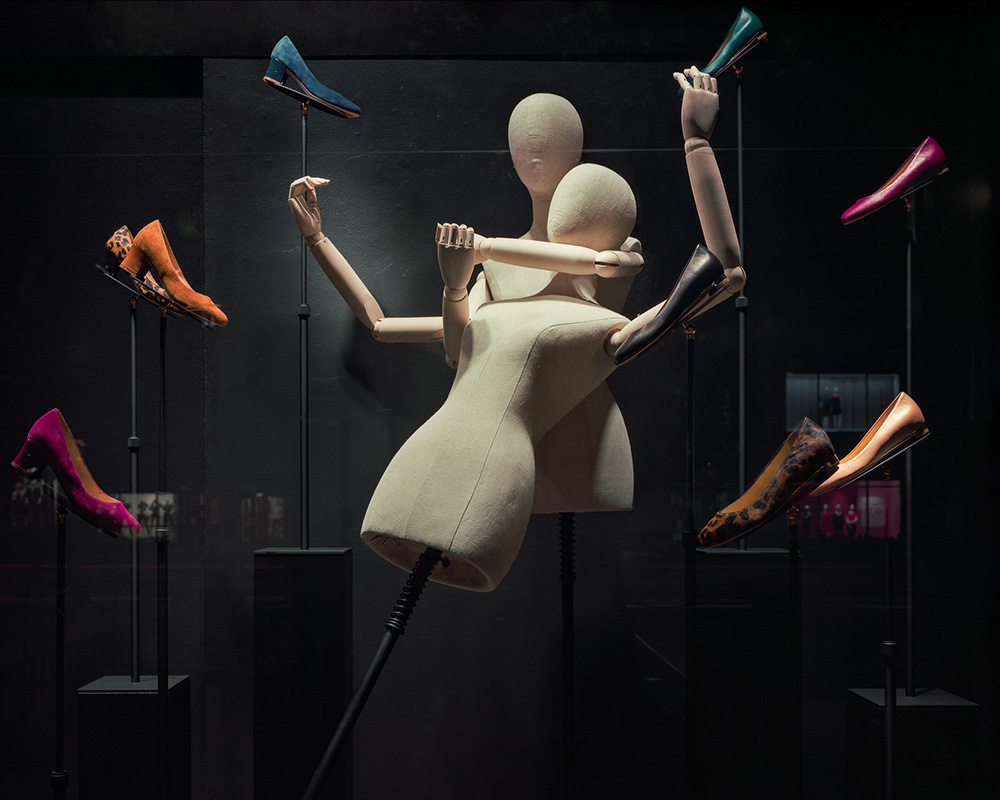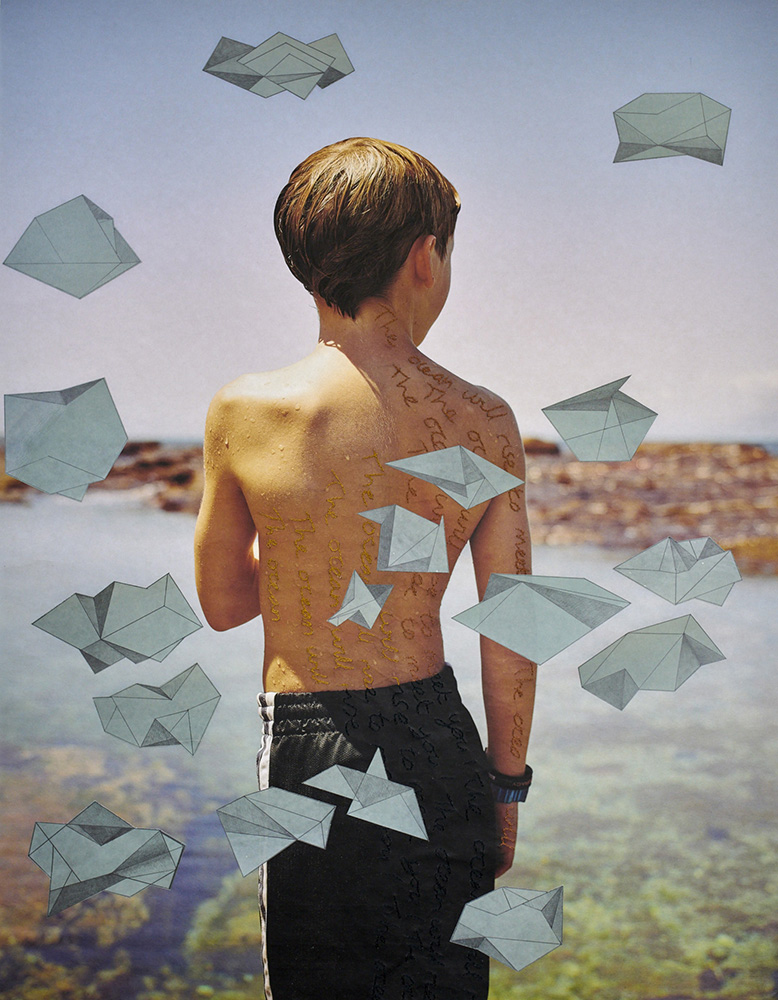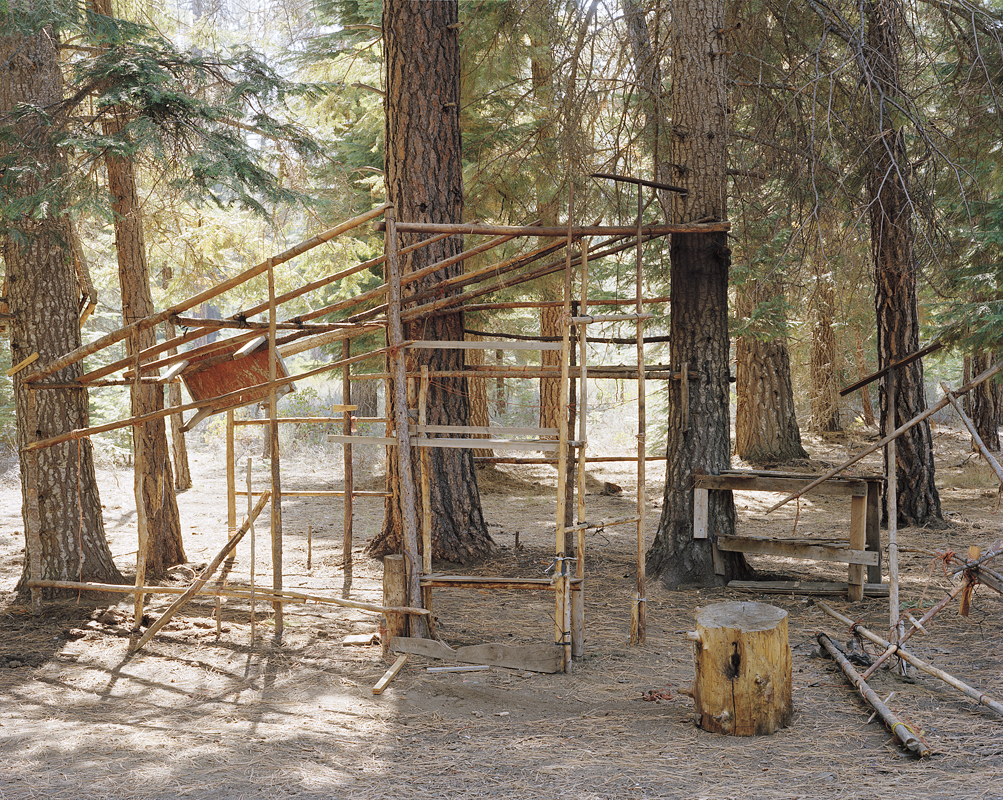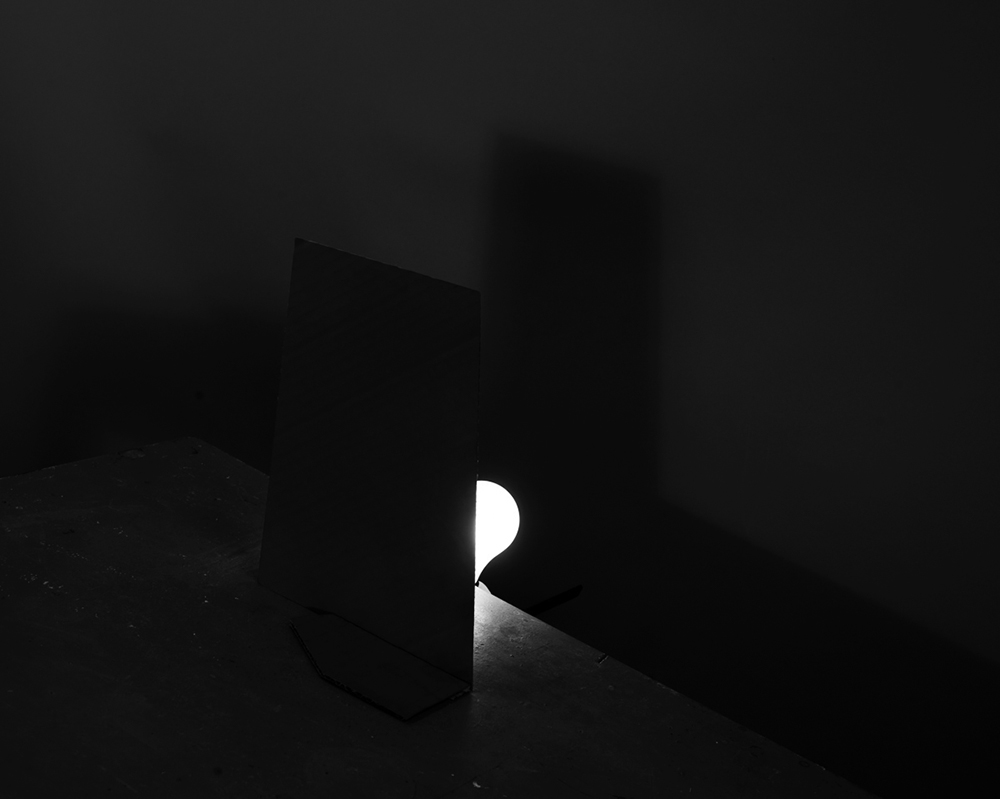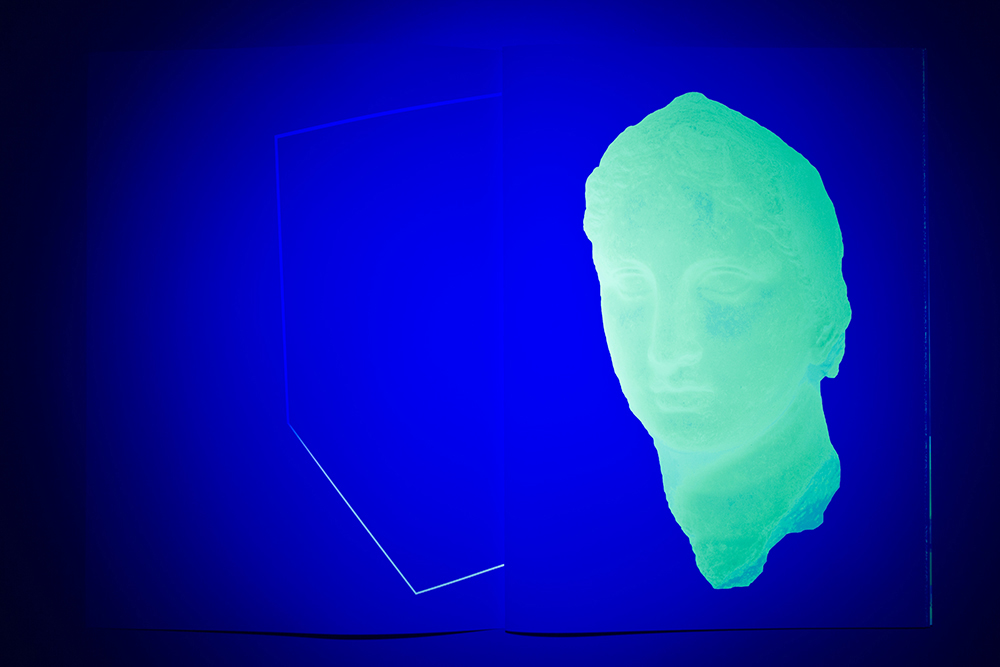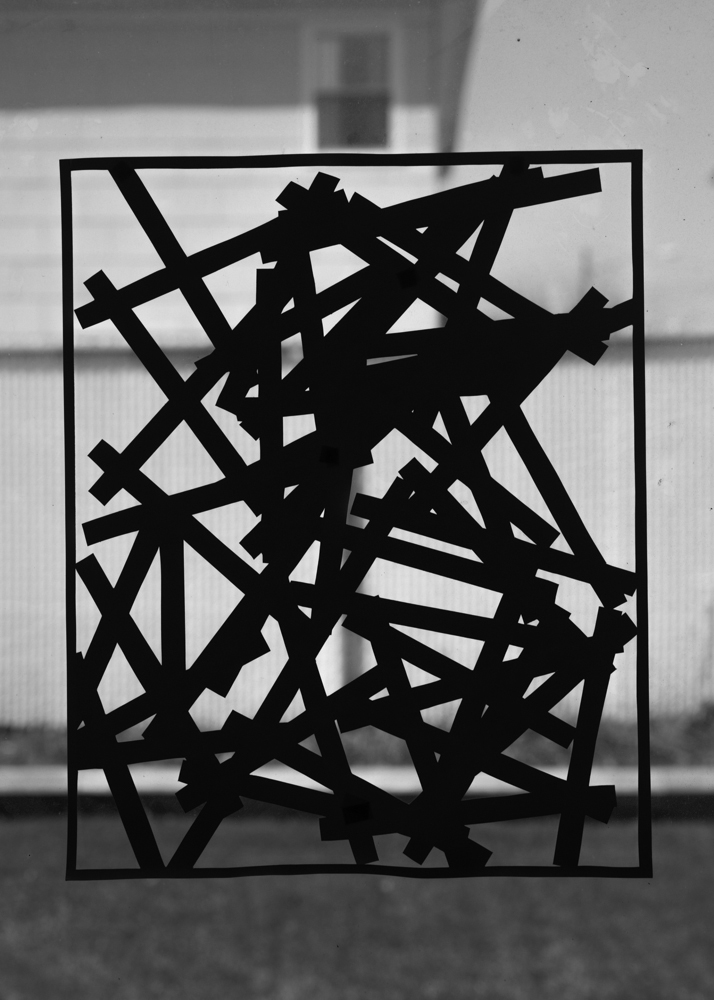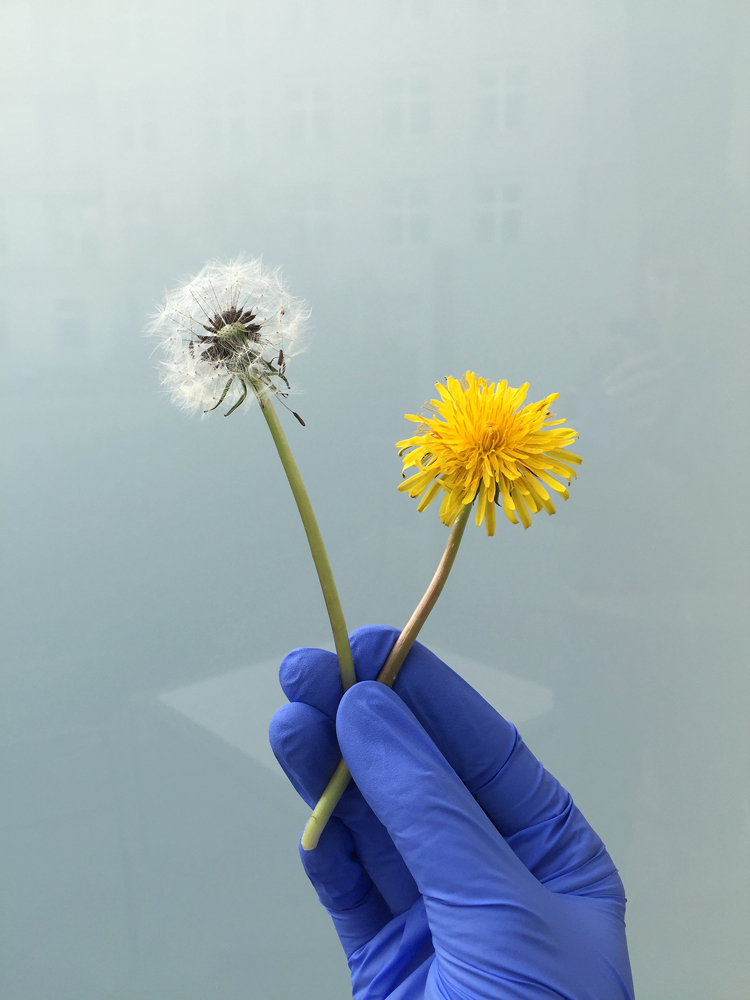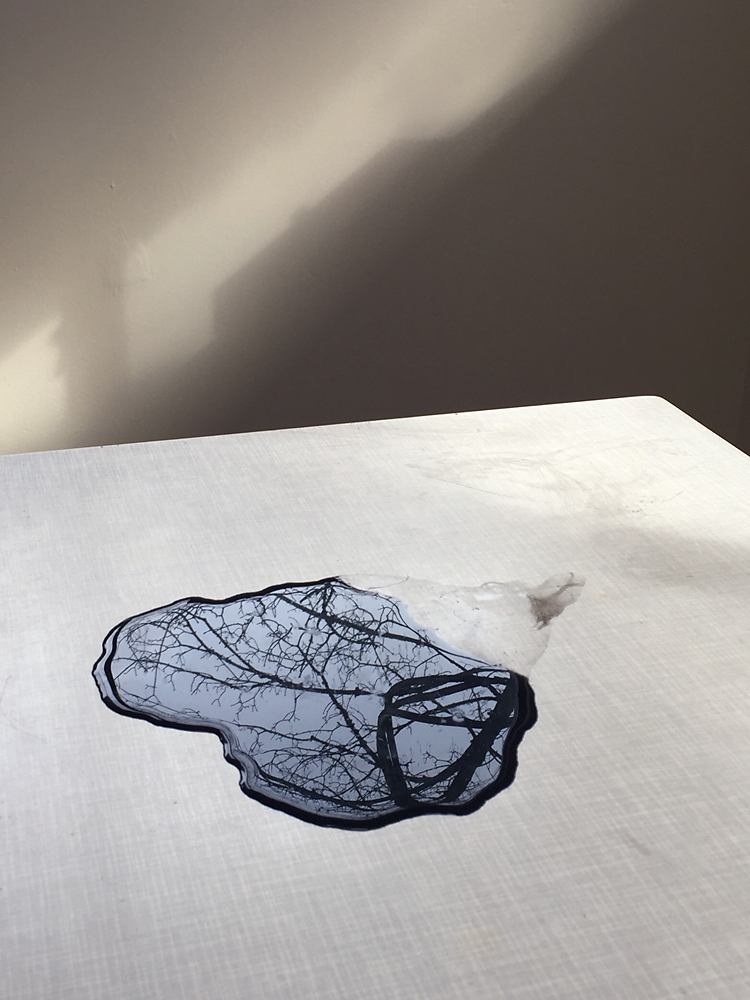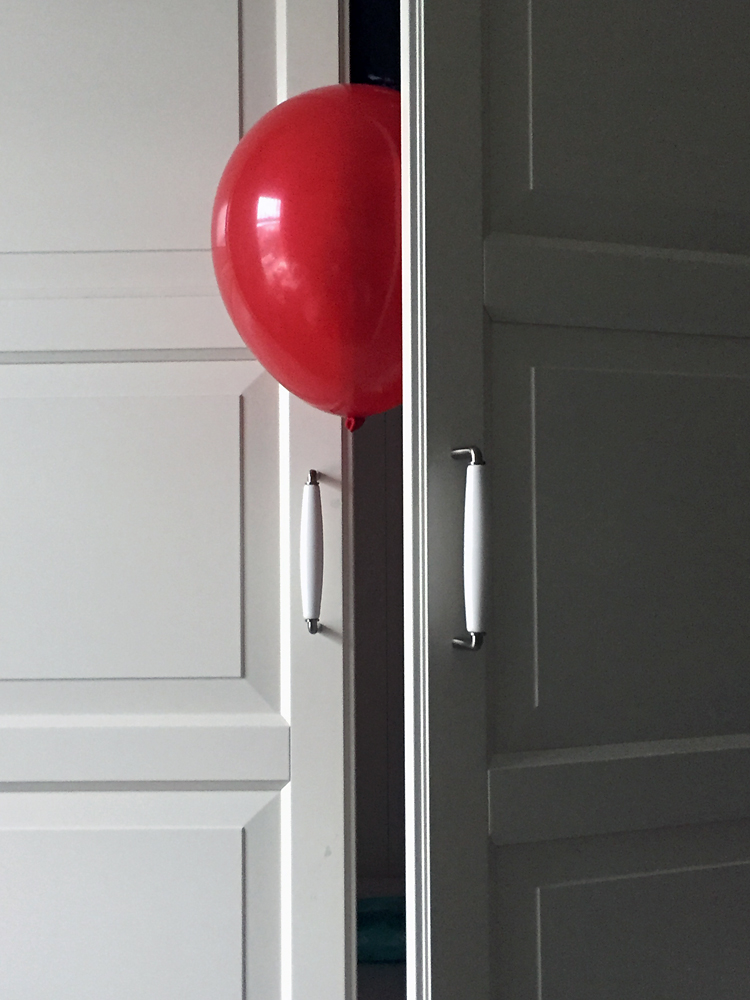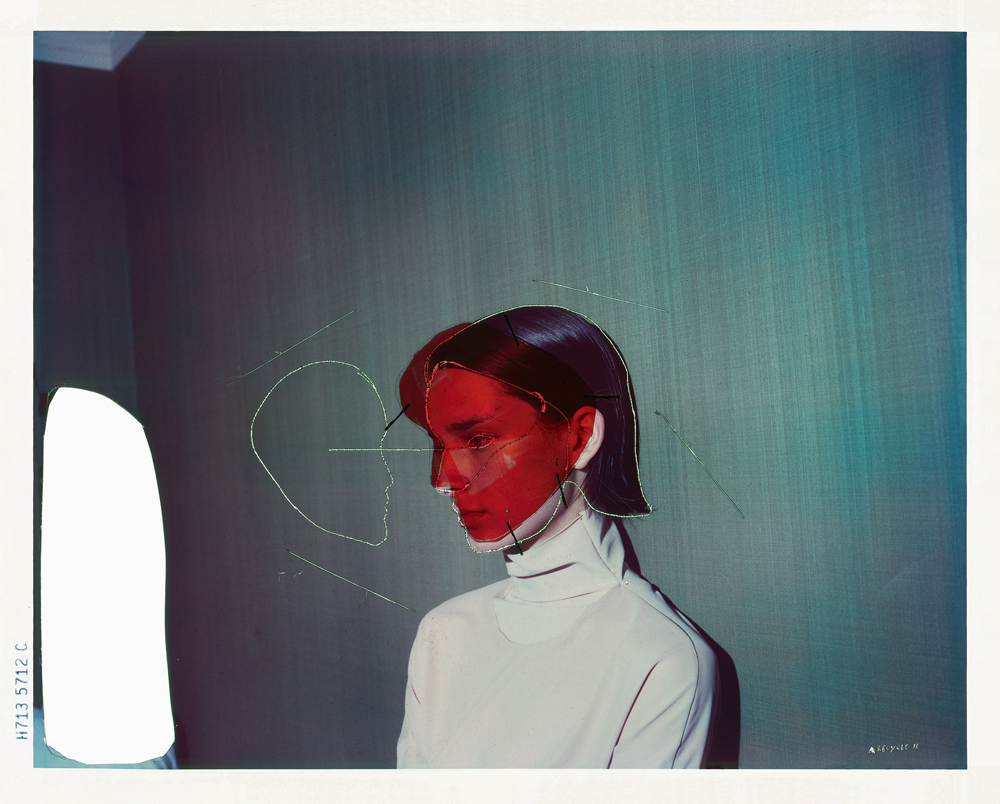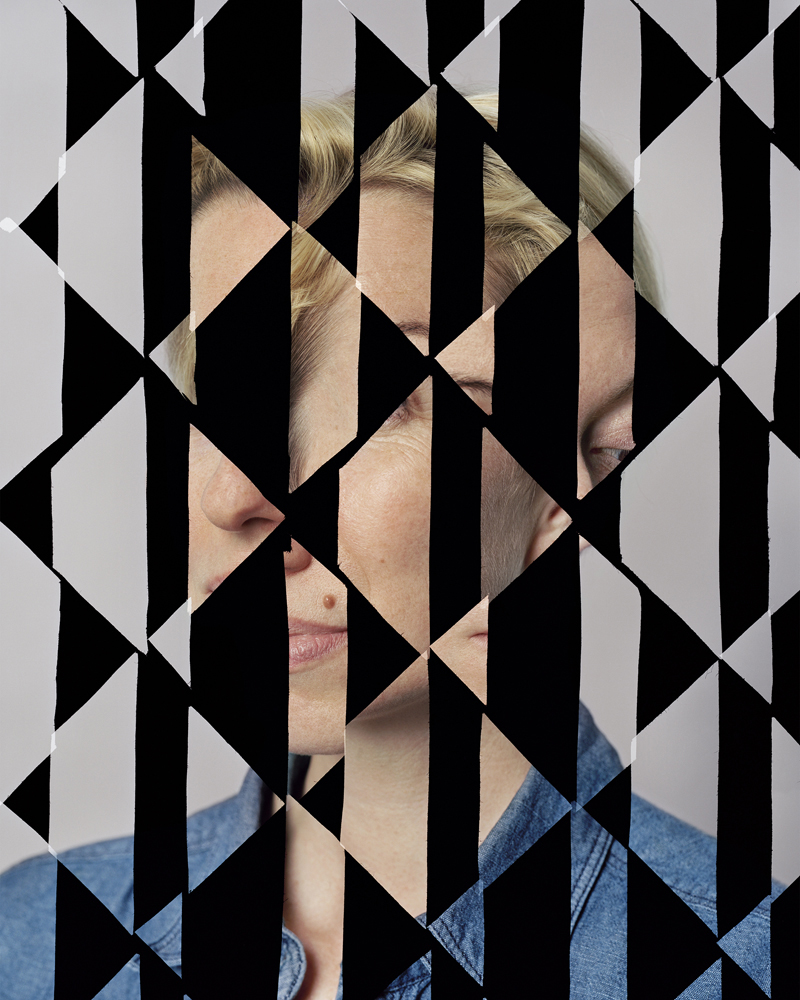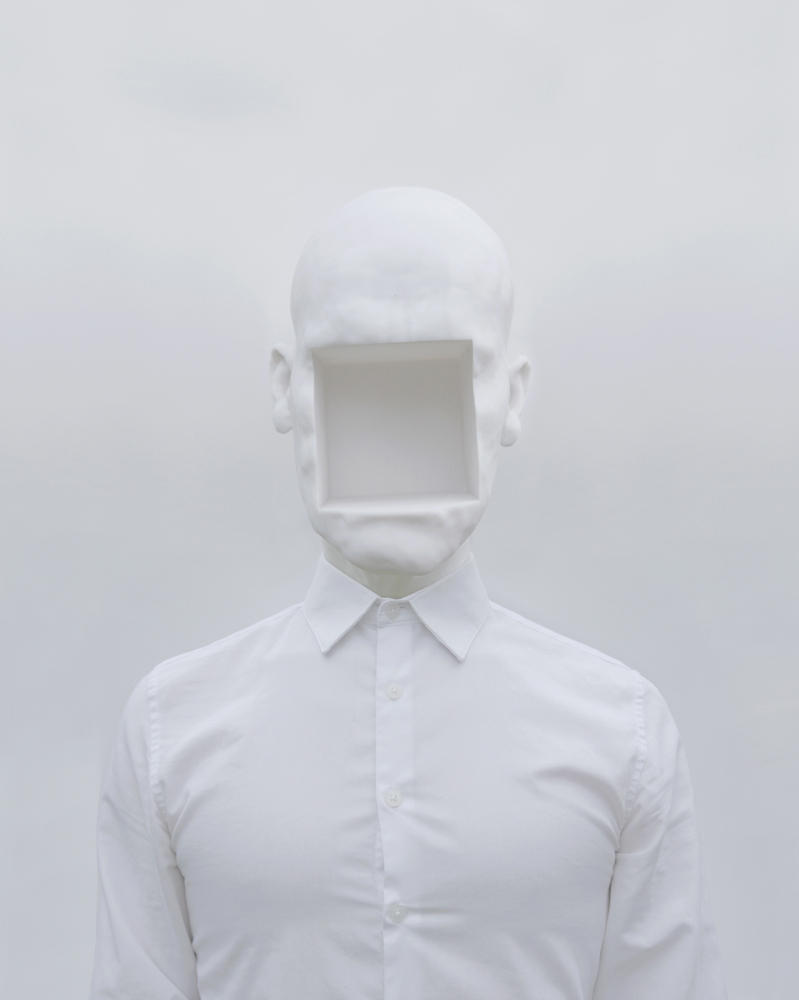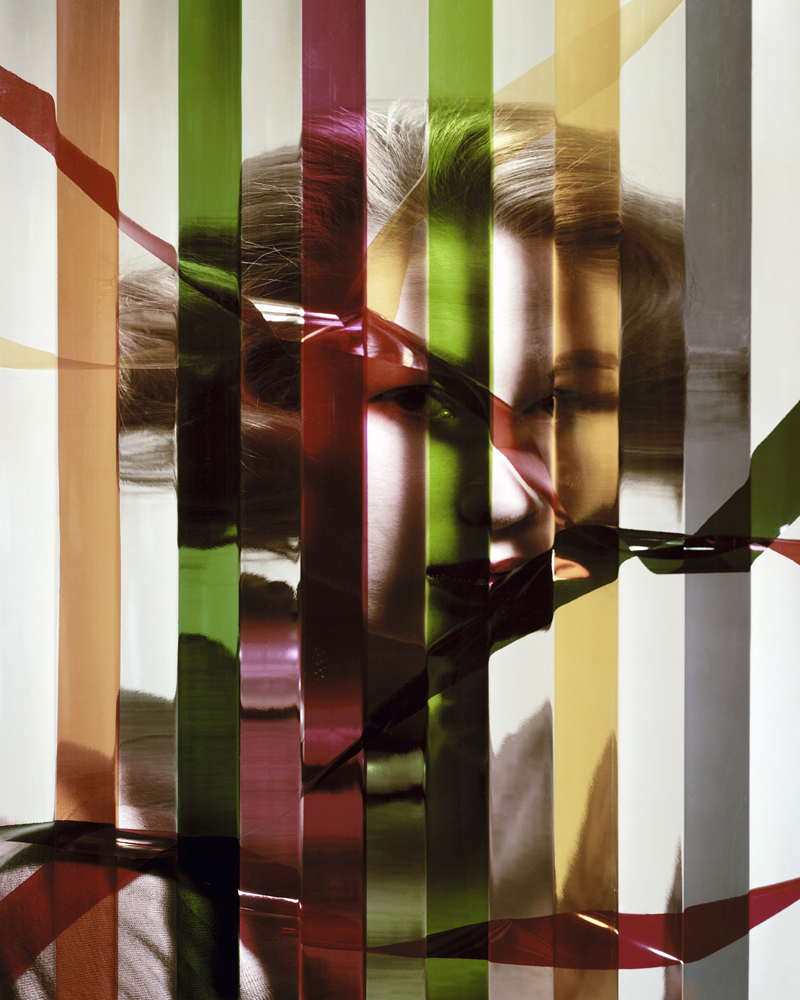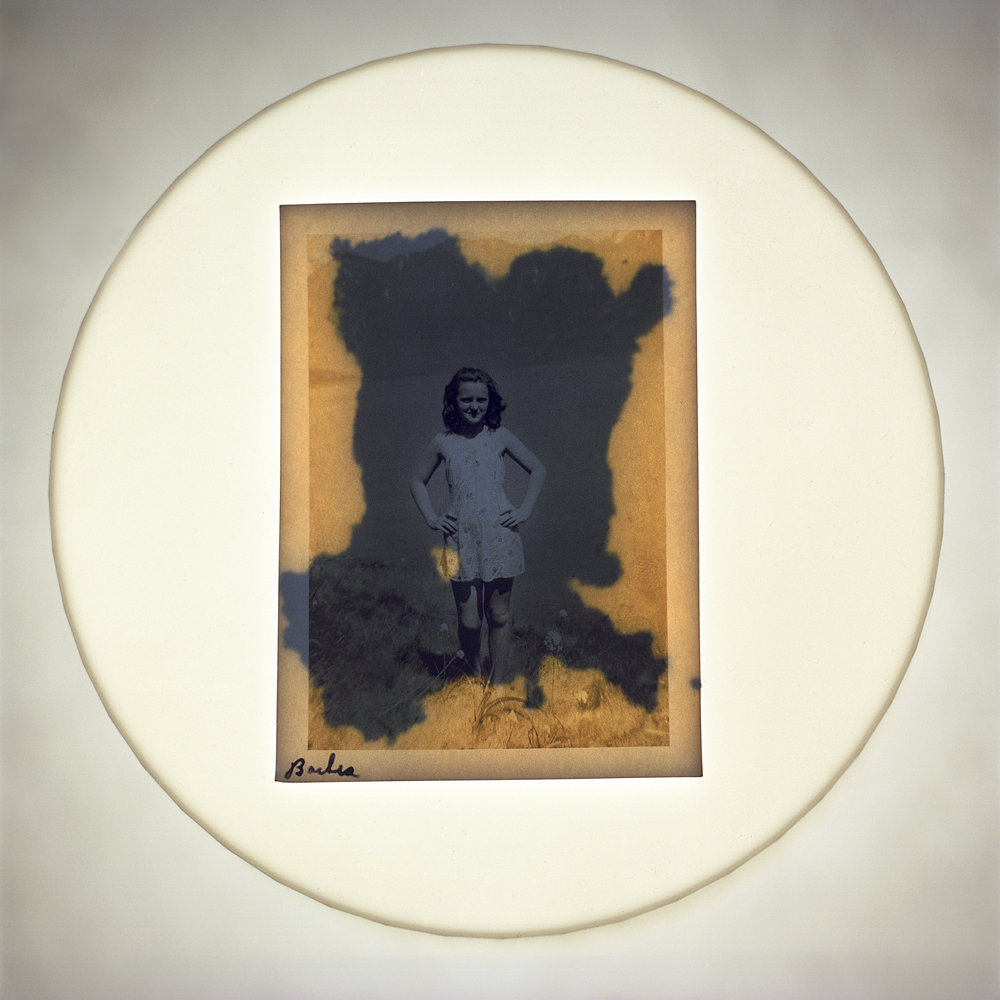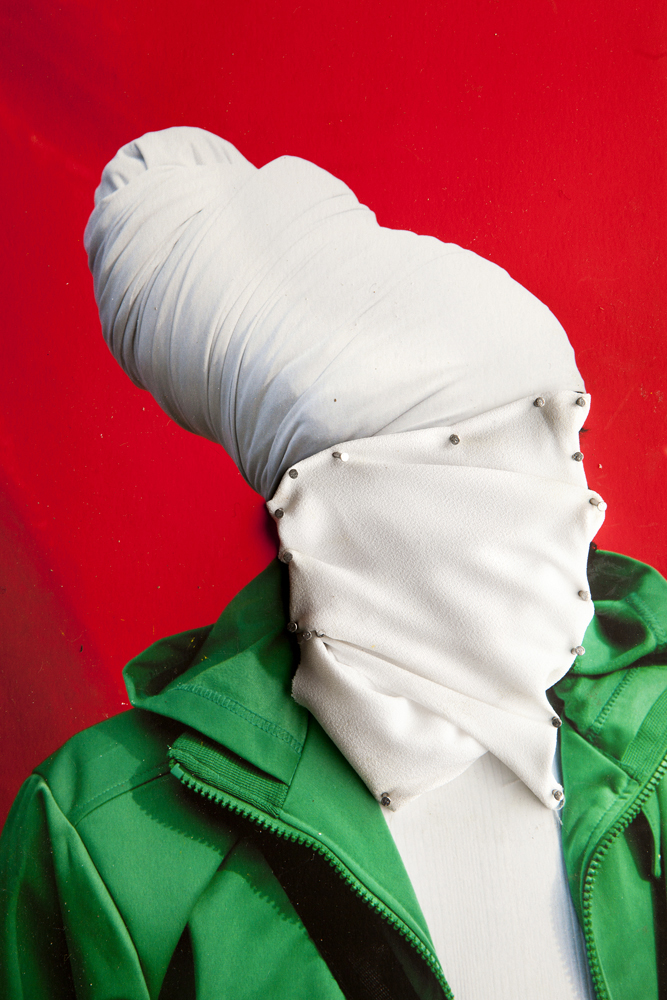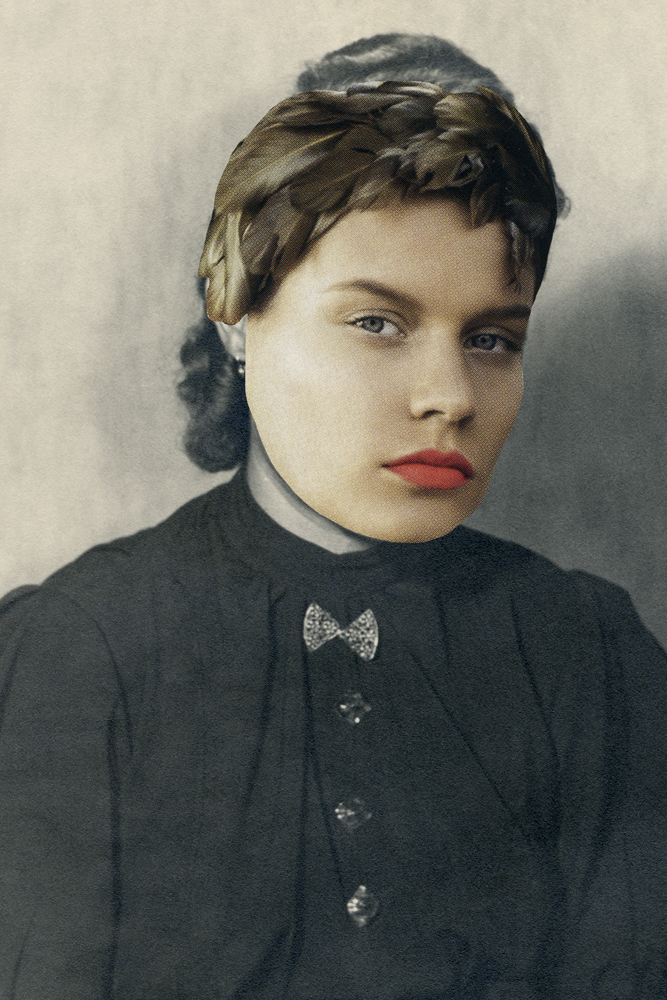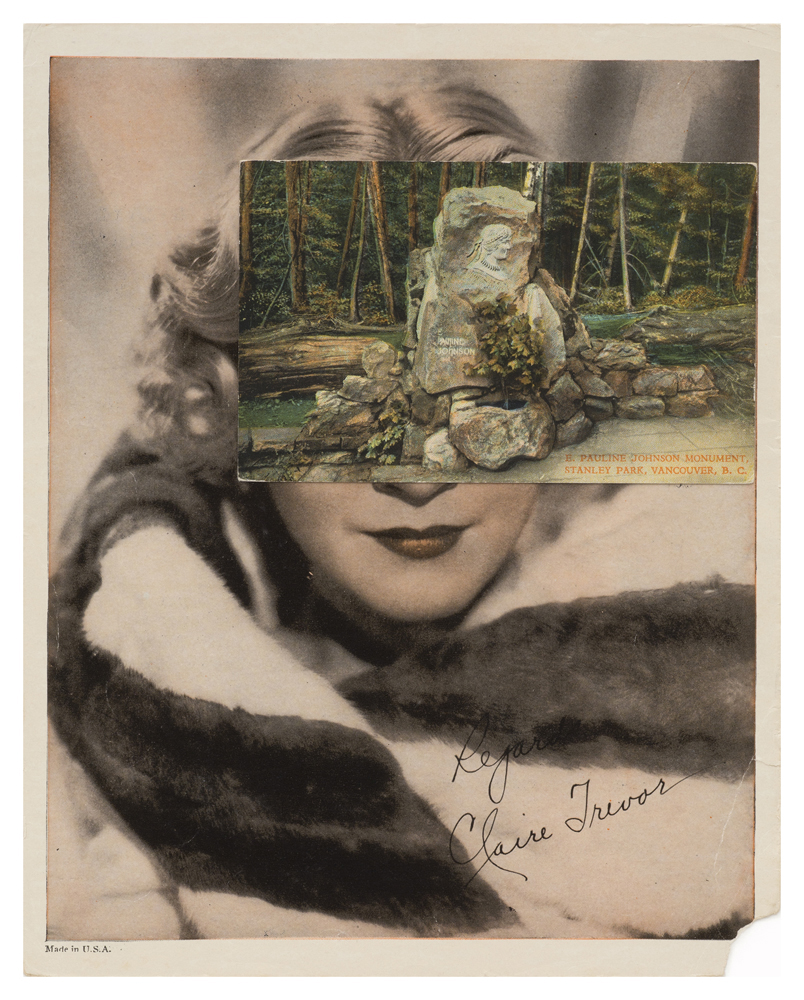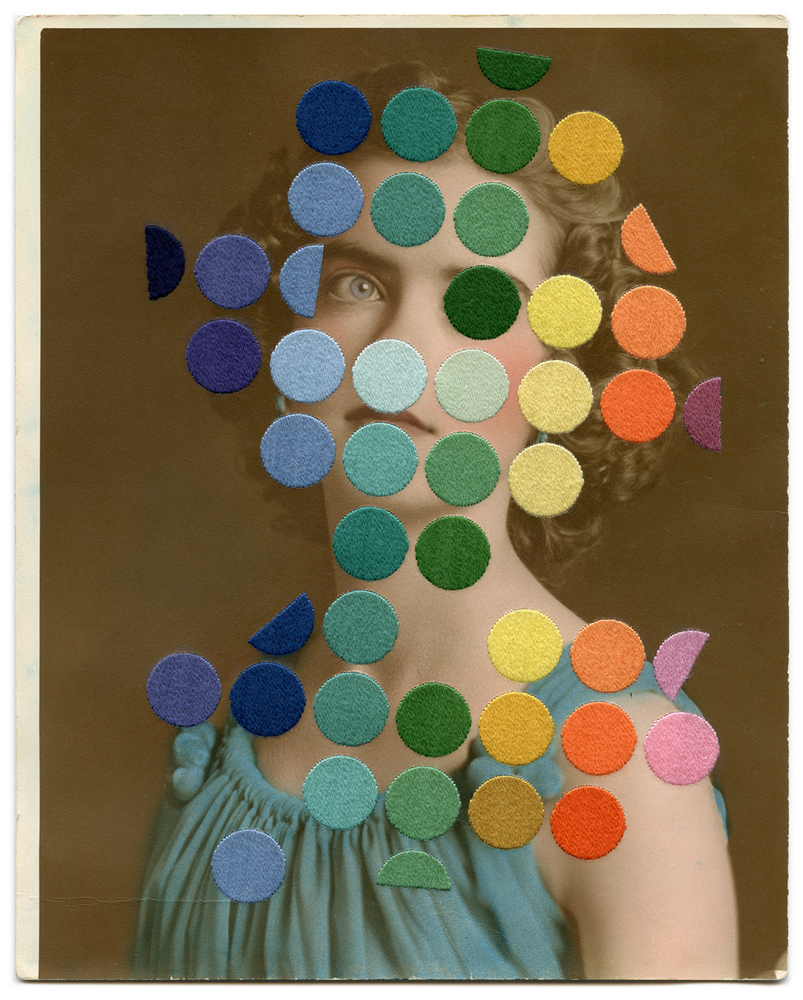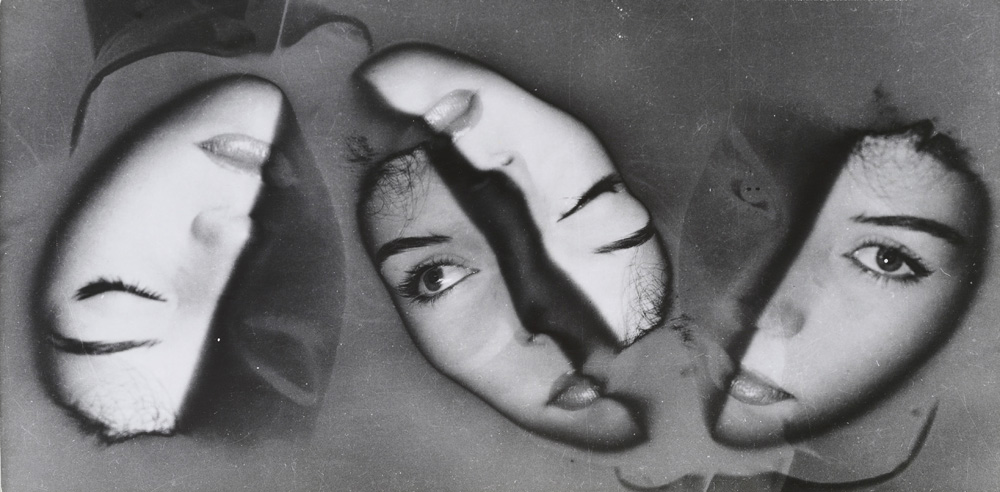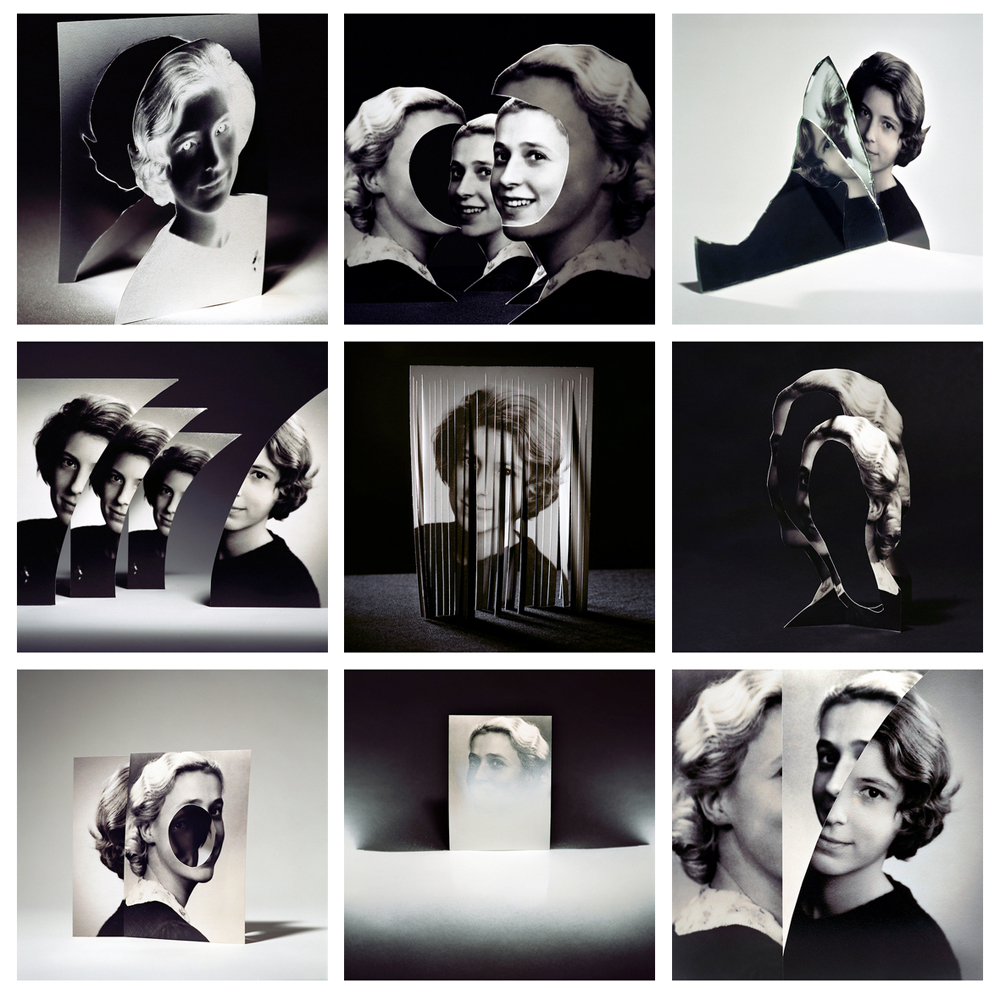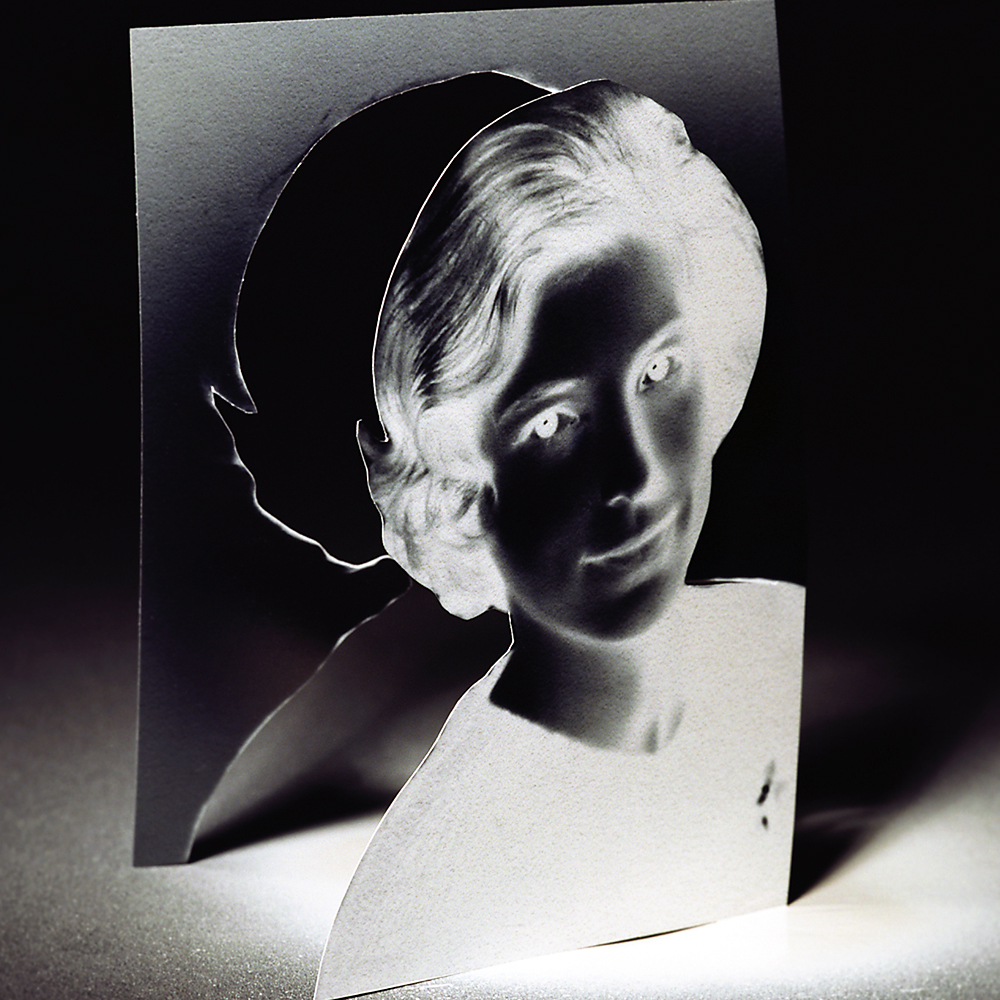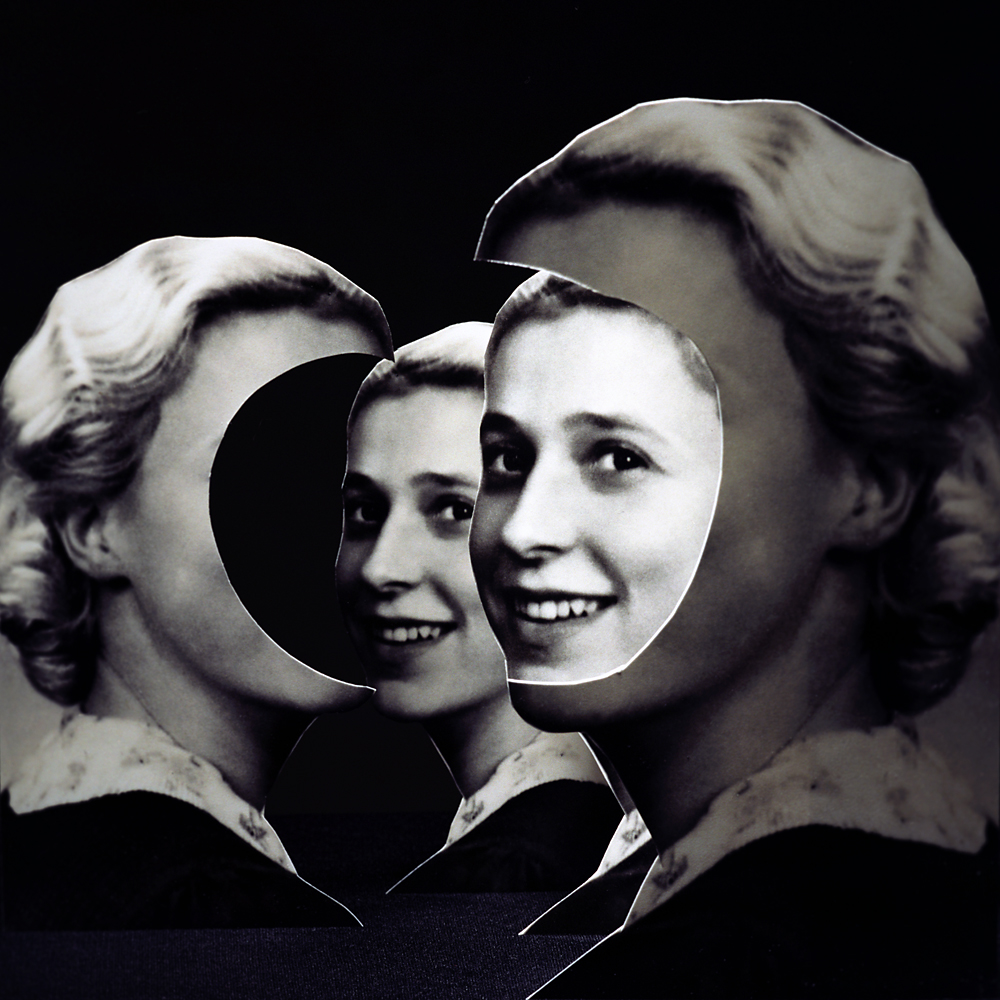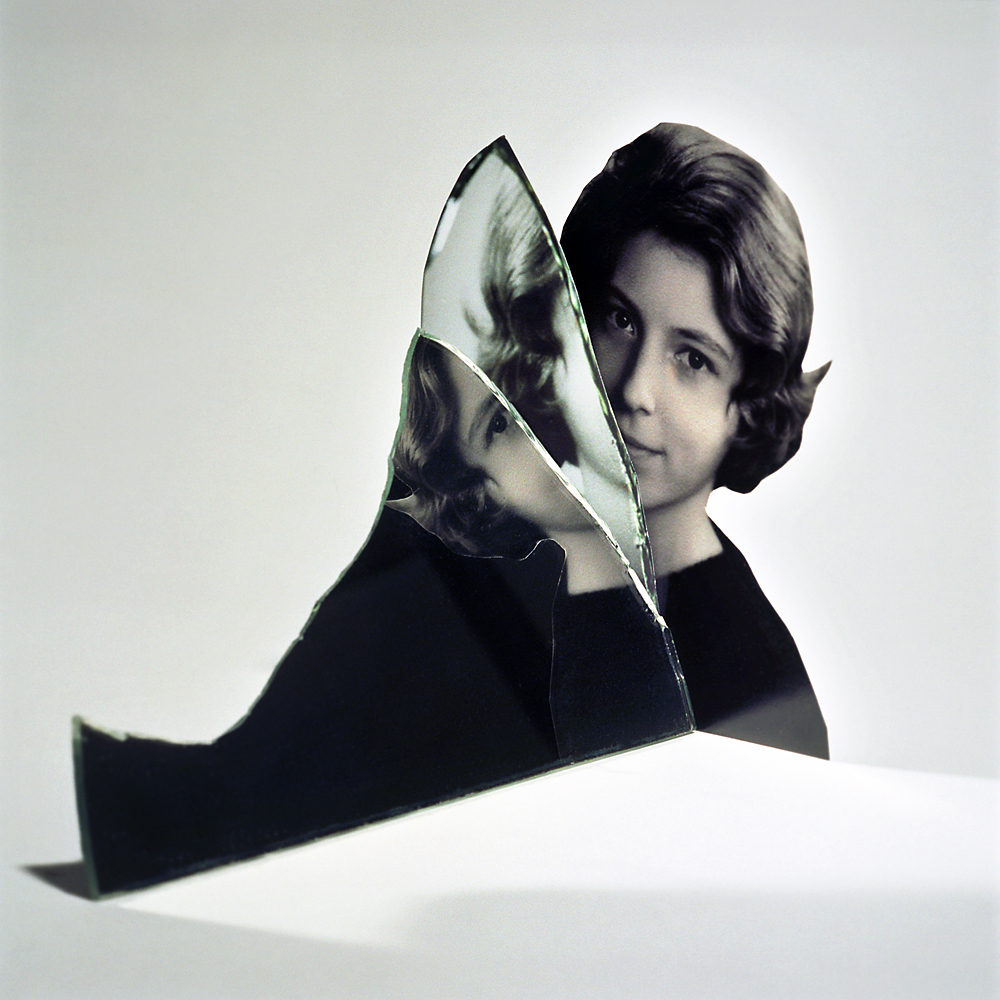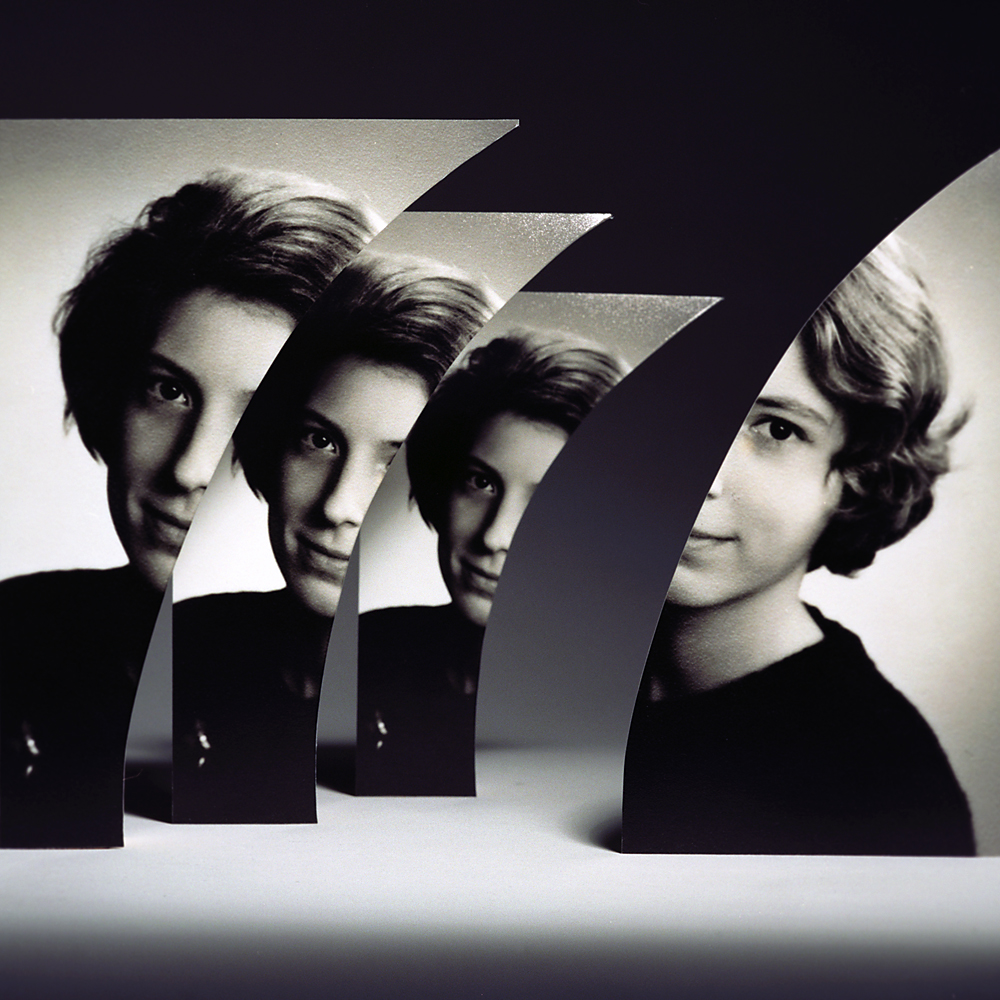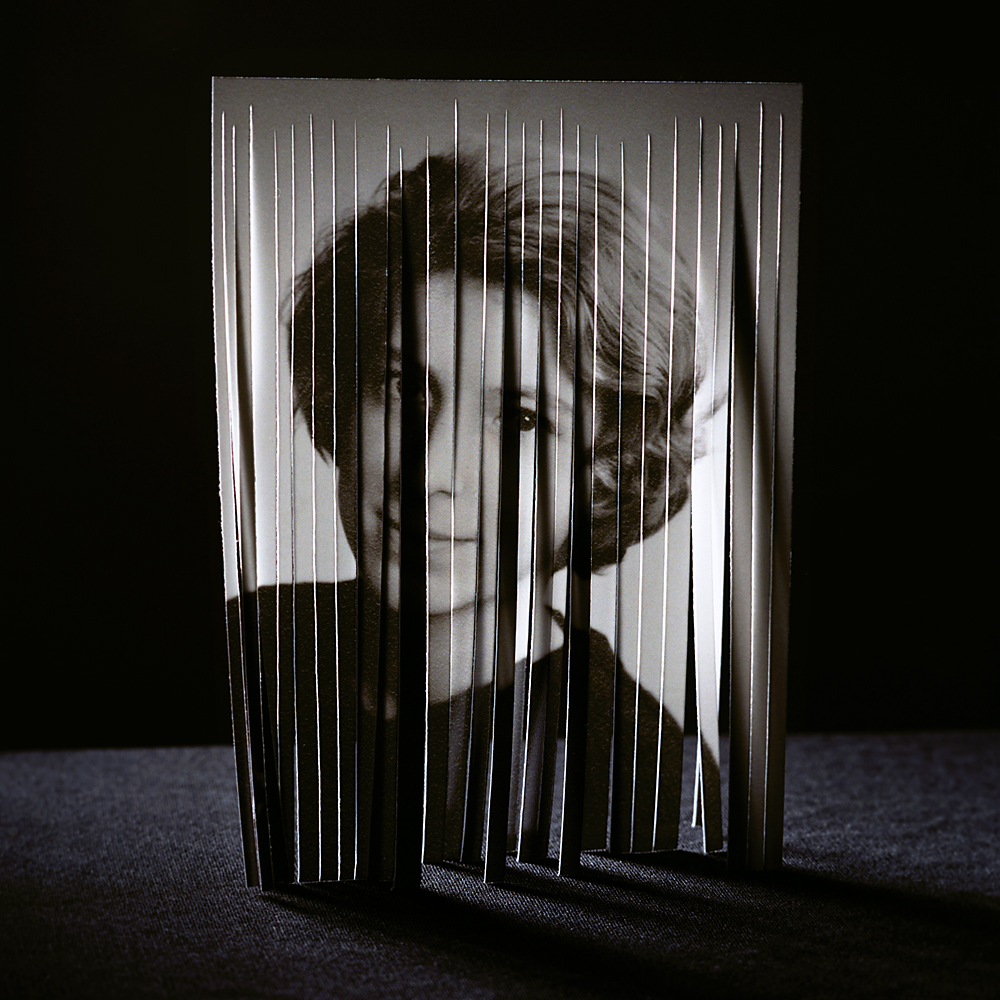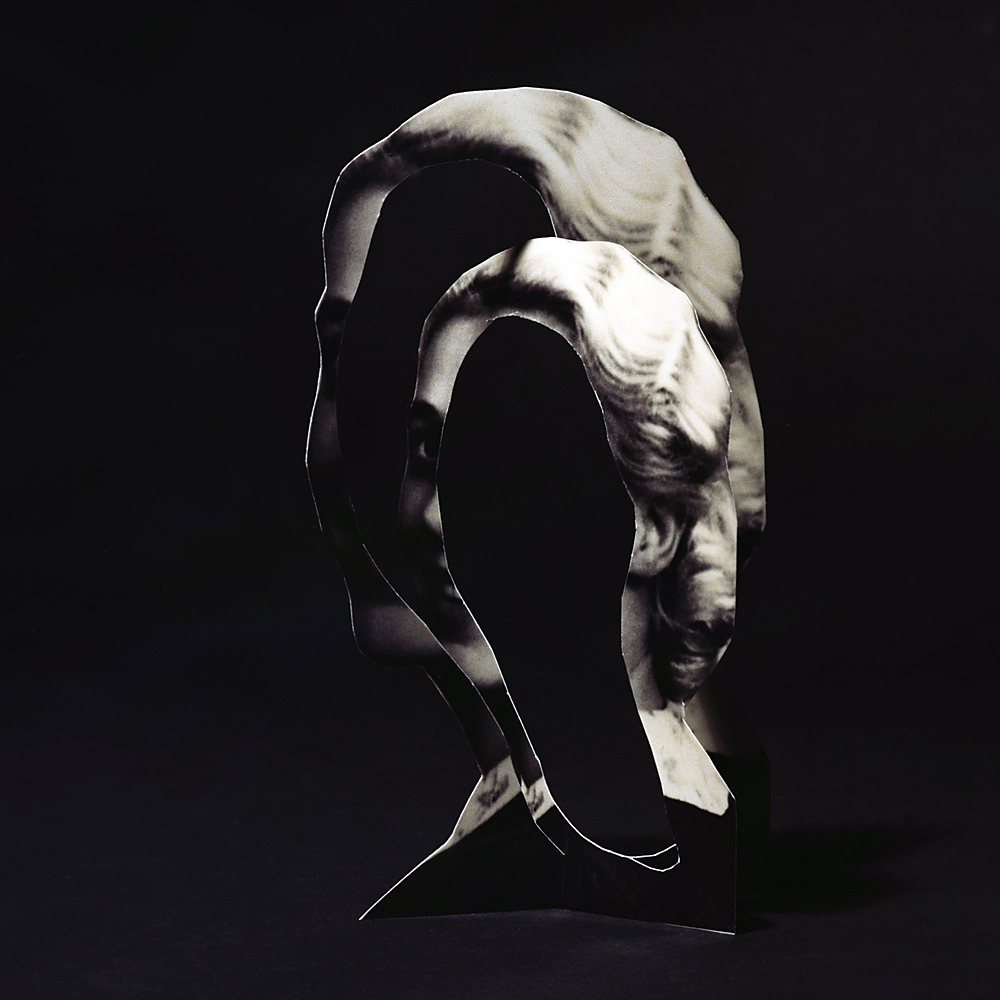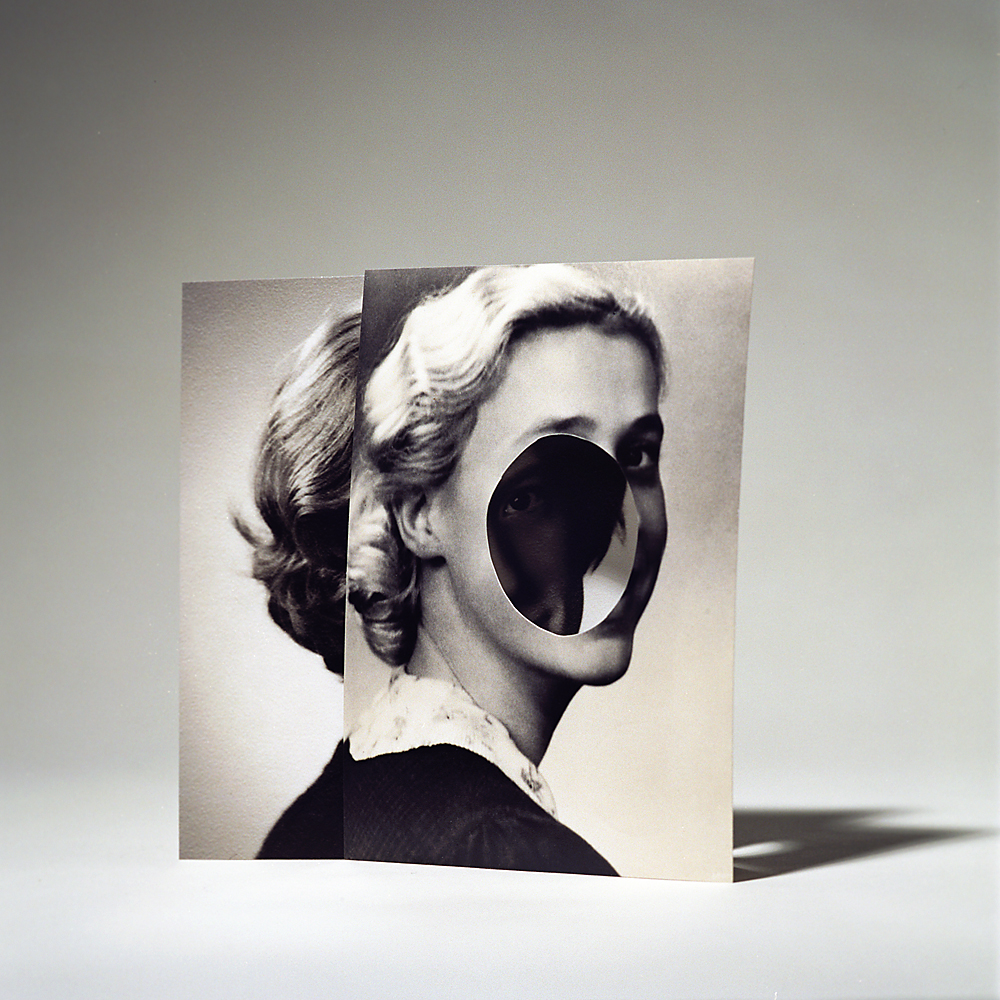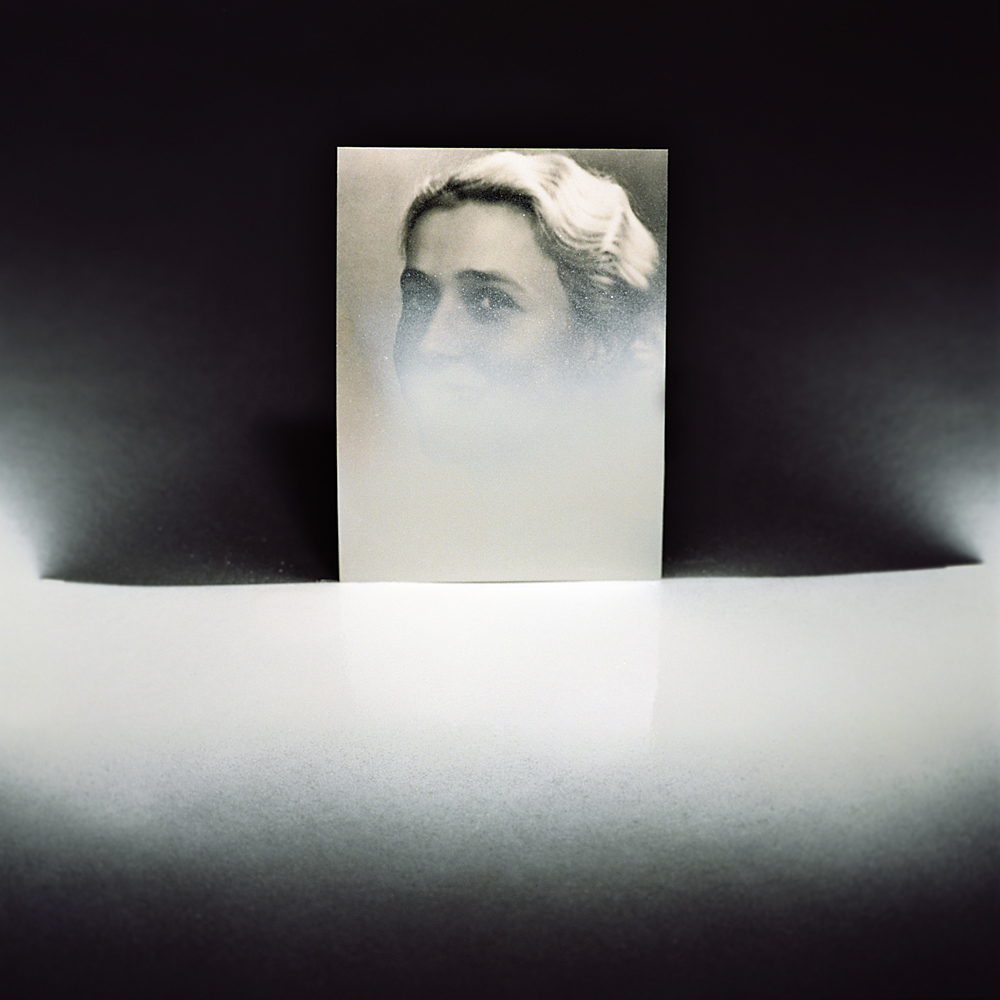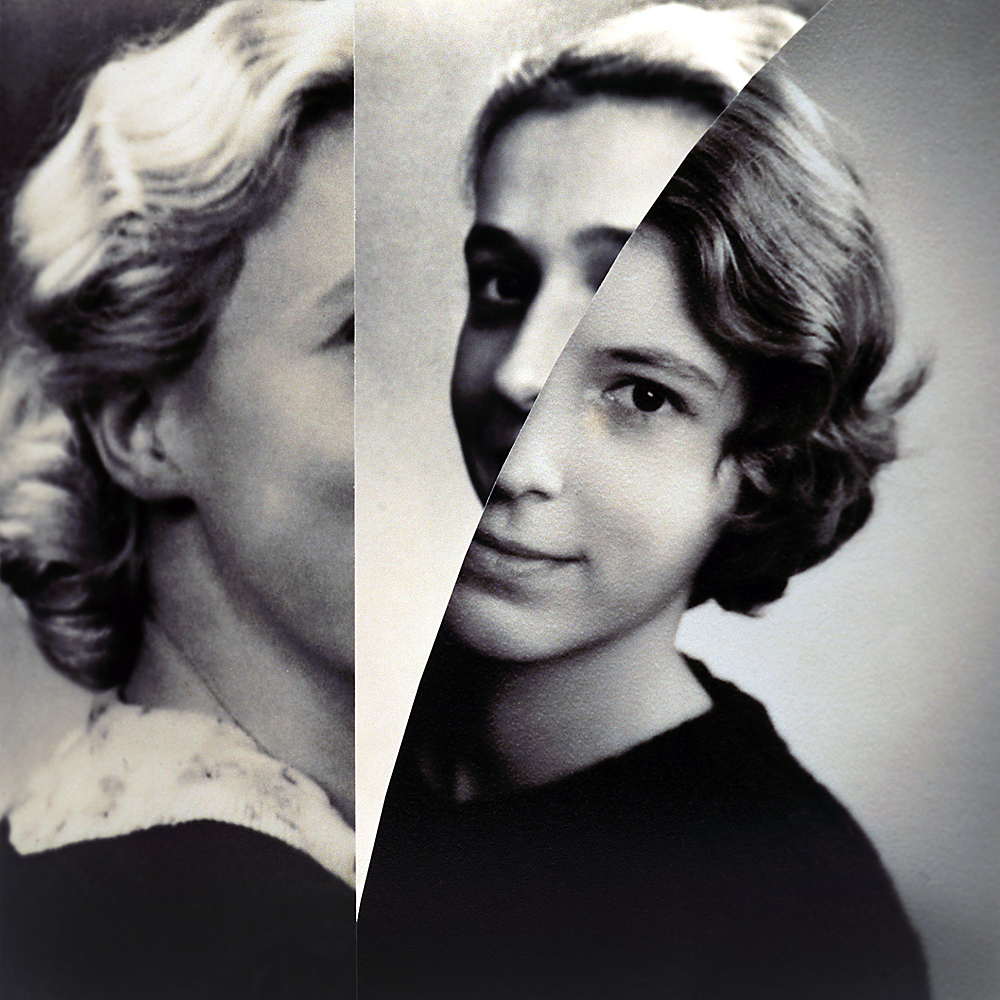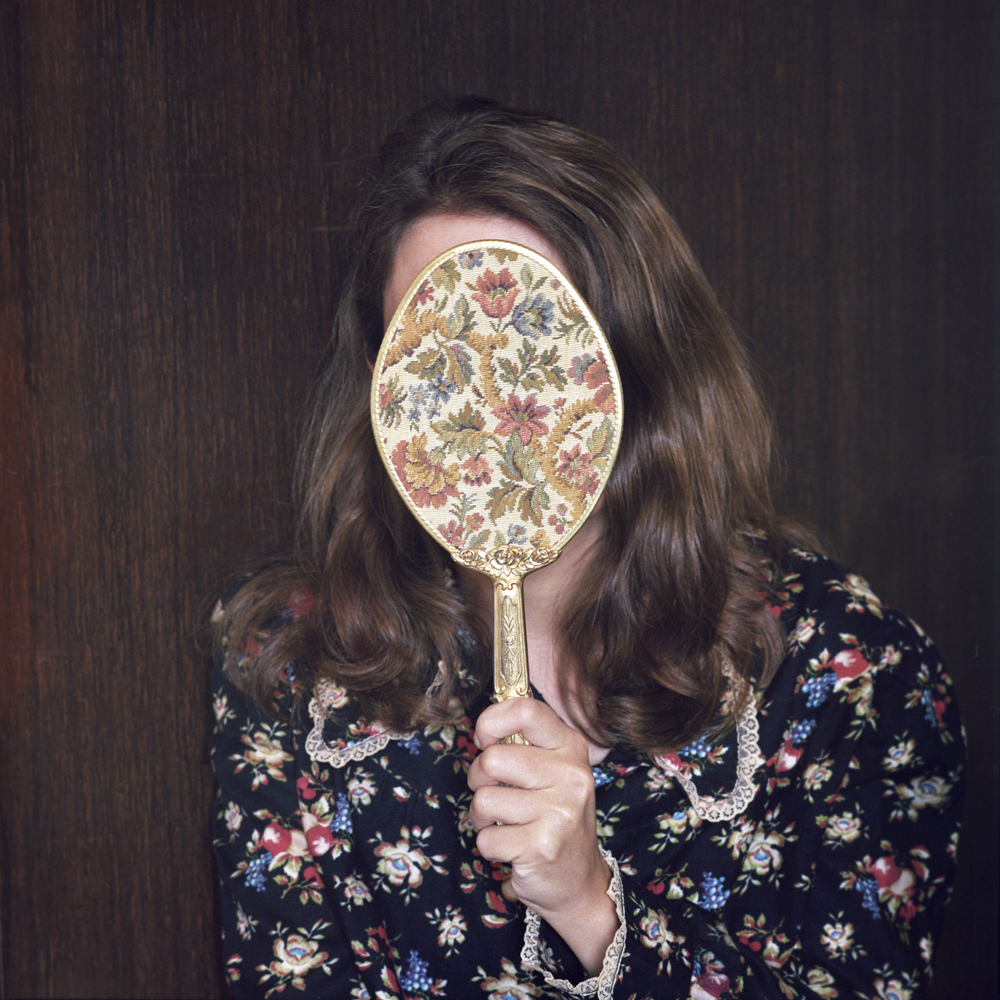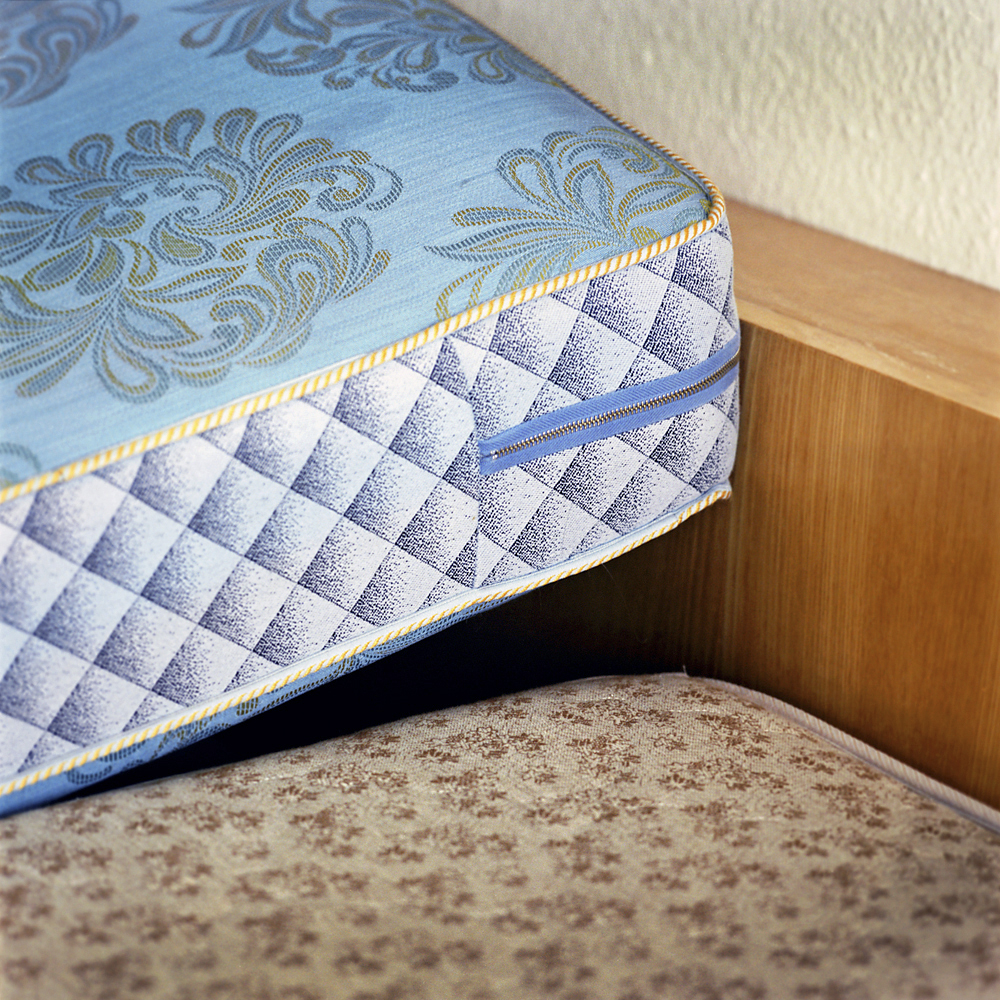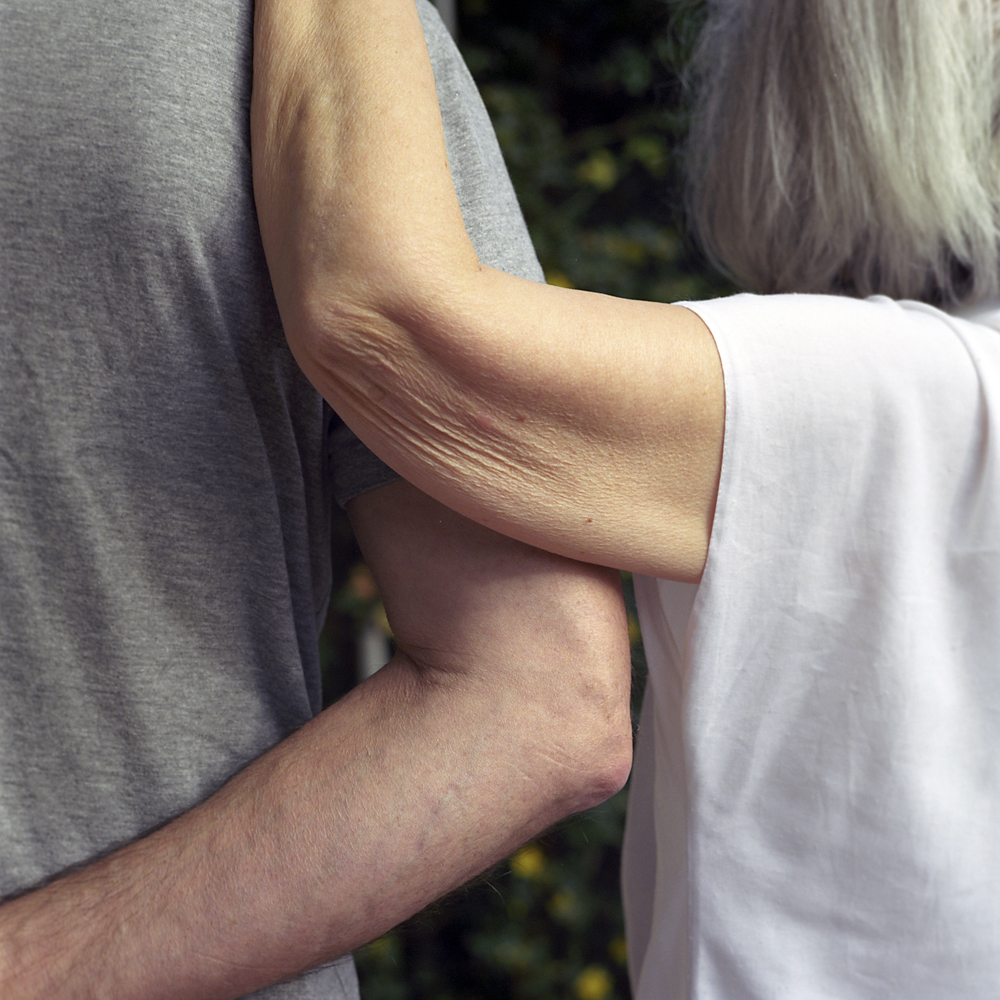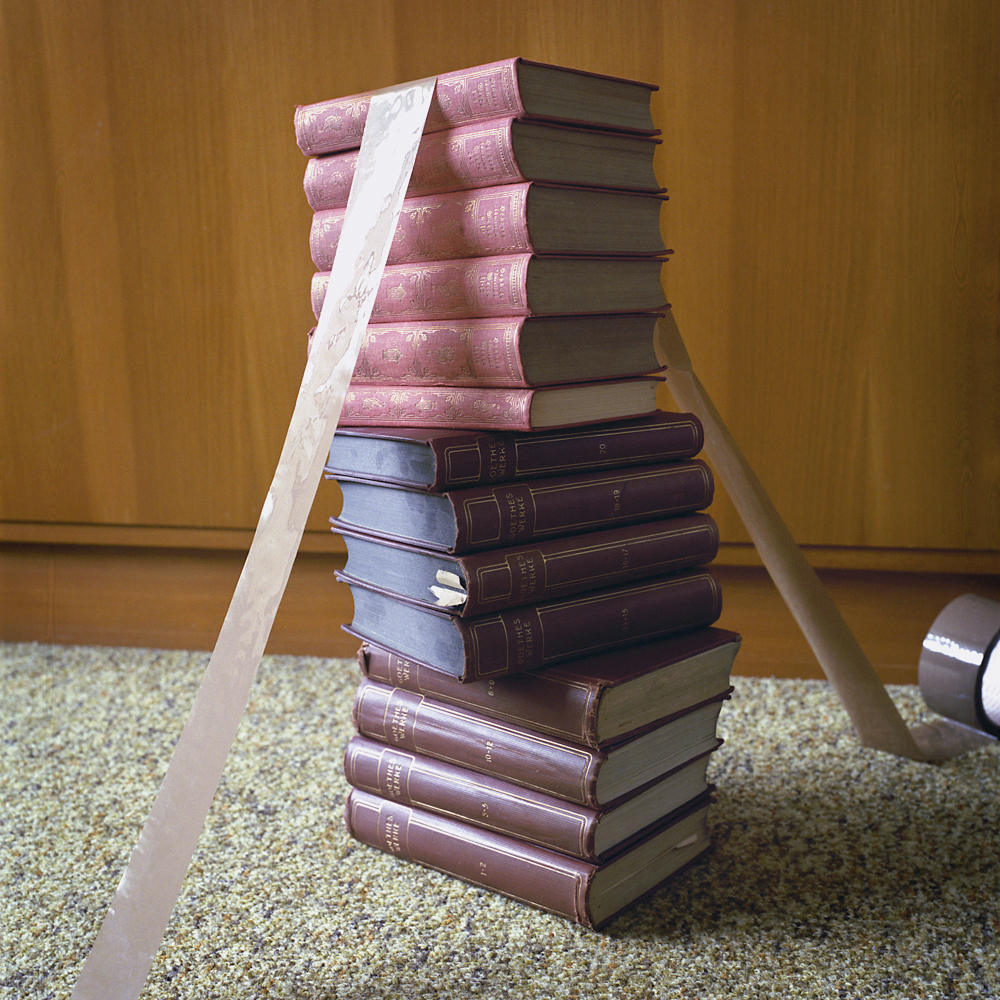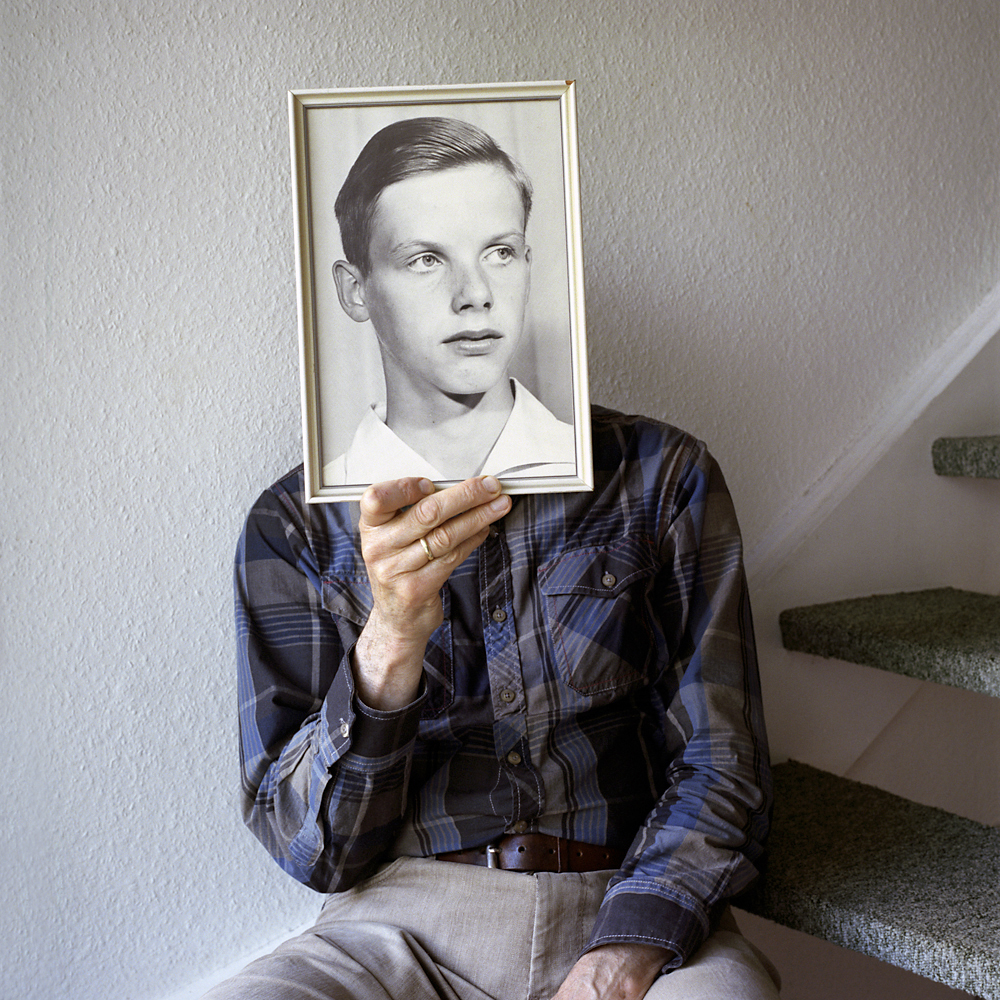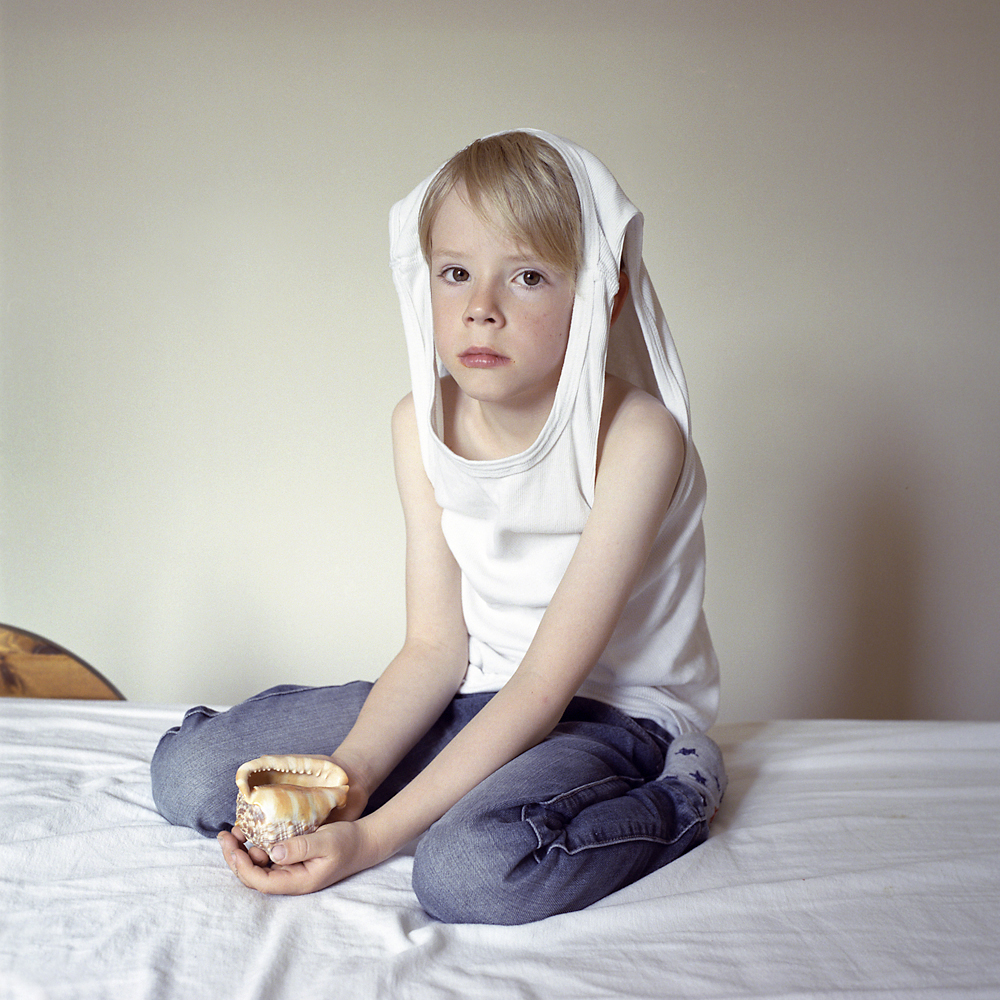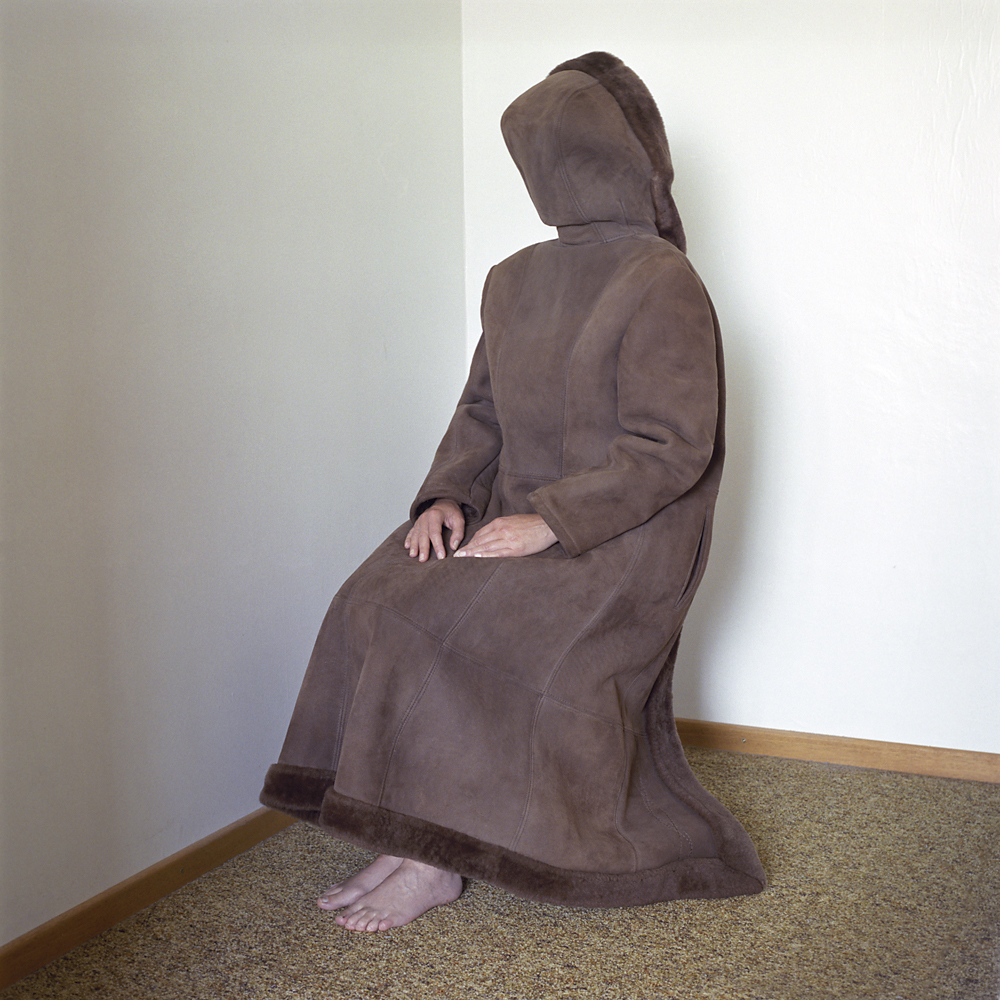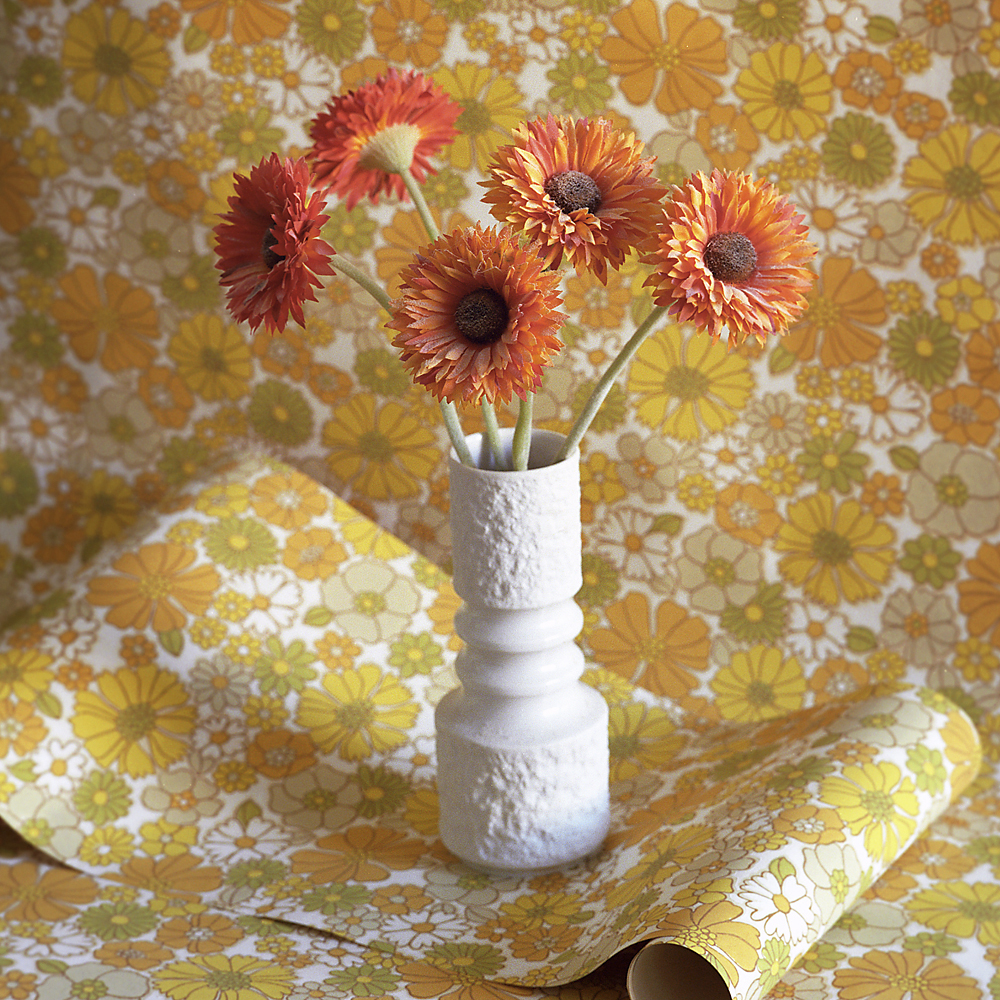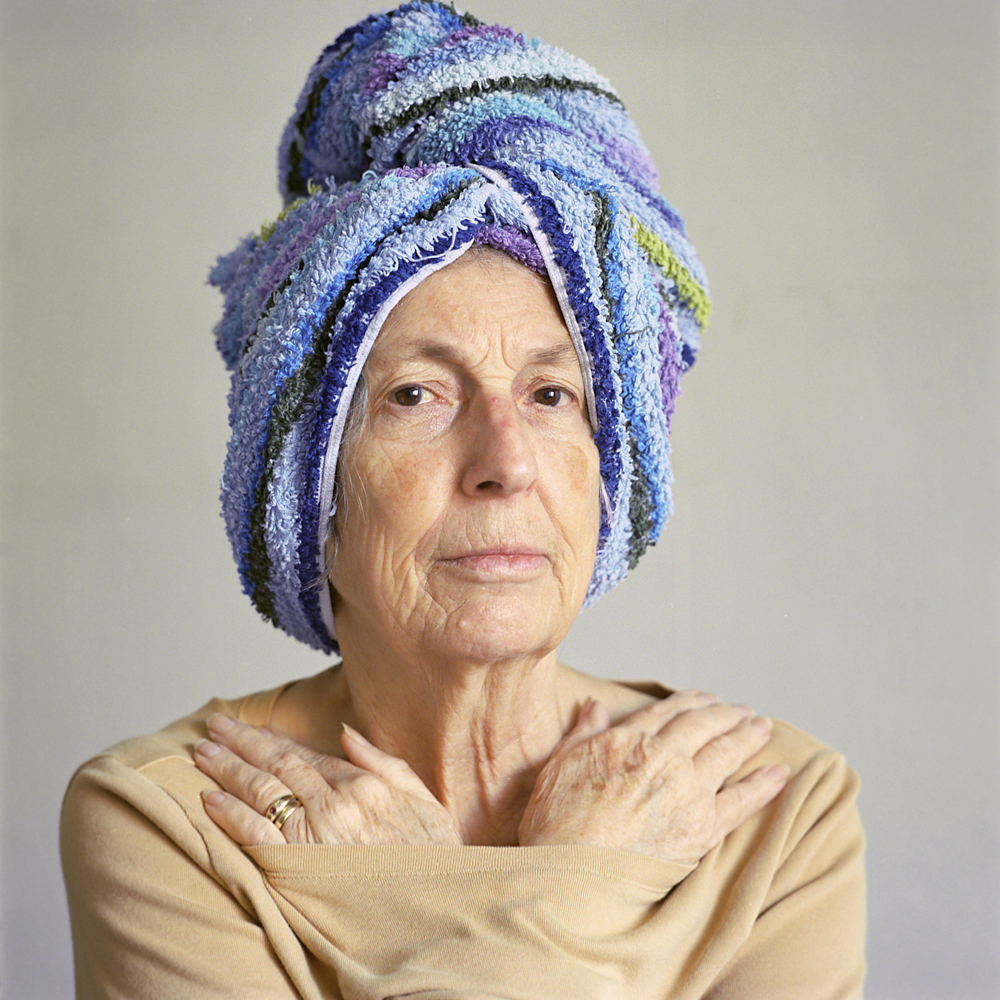Marie Valognes
Artist Feature
Every week an artist is featured whose single image was published by Der Greif. The Feature shows the image in the original context of the series.
Birthe Piontek - Lying Still
Aug 31, 2016
Lying Still, 2010-2016 The images in Lying Still examine notions of the self, mortality, sexuality, intimacy, roles and relationships and their ever-evolving structures. Through the use of staging, I examine the artist’s relationship to the camera, while both observing and being observed. Acting as disruptions to the daily routine, my images use rich iconography and symbolism that displaces the viewer’s expectations of the everyday, creating a psychological landscape that is as treacherous as it is poetic. With the inclusion of found press images from the 1950s and 60s depicting natural disasters, macabre scenes, women performing and modeling for the camera, and other black and white photographs, my intention was to create a multifaceted dialogue that spans generations and brings into question female representation and its relationship to the camera. Through the blending of created and found imagery, my work points towards collective experience and exposes the desires, urges and fears that exist latently in our subconscious and reveal themselves against the backdrop of the domestic space.
Artist Blog
The blog of Der Greif is written entirely by the artists who have been invited to doing an Artist-Feature. Every week, we have a different author.
Published in:
»Guest-Room Lars Willumeit«
»Der Greif #9«
Piece of Cake
Sep 07, 2016 - Birthe Piontek
Ok, I say it: Being an artist can be lonely and depressing. Of course there are many beautiful aspects to it, too, but sometimes it can be a bit overwhelming – at least for me. Now and then I feel stuck in my head, or with my ideas. When you’re going to school, you are usually part of a community. During class, crit groups, or in the lab, there is opportunity to share and talk about your work and other things that matter. Then, when you leave school and “start your own business”, or in my case, move away, it can be difficult to find a community and things can get a bit isolated. That’s why I’m grateful to be part of The Piece of Cake Project. Because, being an artist is definitely not a “piece of cake” but with a community that has your back, it can be a lot easier. The Piece of Cake project was founded by Charles Fréger in France 2002. Starting as a small group of like minded people, the network spread across Europe and now has two “branches” the European and a North American one. Each year we have four workshops, two in Europe and two in North America. The aim is to have a lively exchange between the artists who are part of the network, to come together, to talk about our work and sometimes collaborate with other institutions (i.e. Photo Espana, Festival Images Vevey, PCNW Seattle to name a few). During those workshops, we not only share work, but also meals, activities and laughs / worries, and usually everybody leaves recharged and exhausted at the same time. For more information and to see all members go to: http://www.pocproject.com/
On struggling
Sep 06, 2016 - Birthe Piontek
Today I want to share some words of wisdom from one of my favorite authors: Rainer Maria Rilke. His book Letters To A Young Poet has always been a source of inspiration and guidance for me. I find myself returning to it every time I struggle, am impatient and frustrated with my work or myself. It consists of ten letters written to a young man who was about to enter the German military. His name was Franz Kappus, he was 19 years old, and he wrote Rilke looking for guidance and a critique of some of his poems. Rilke himself was only 27 when the first letter was written. The resulting five year correspondence is in a way an owner's manual on what it is and what is required to be an artist and a person. “Have patience with everything that remains unsolved in your heart. Try to love the questions themselves, like locked rooms and like books written in a foreign language. Do not now look for the answers. They cannot now be given to you because you could not live them. It is a question of experiencing everything. At present you need to live the question. Perhaps you will gradually, without even noticing it, find yourself experiencing the answer, some distant day.”
L’autre visage
Sep 05, 2016 - Birthe Piontek
Portraiture and the attempt to capture or visualize identity have always been the focus of my practice. Over the course of the last years, I thought a lot about portrait photography and what I am able to tell about a person in a portrait. I started to question the power of an image and what it can actually reveal. I was at a point where I needed a bit of departure from the way I had approached the sujet. This is how the project Mimesis emerged. Earlier this year I was fortunate to have work from the Mimesis series included in a group show called “l’Autre visage” at the Centre Photographique Pole Image Haute-Normandie in Rouen, France. The exhibition focuses on “the other face”, the one that is hidden and not necessarily seen on the surface, and addresses themes of the universal rather than the individual. Here is a little insight from Raphaëlle Stopin, the show’s curator: “The paradox of portraying interiority was part of the original Greek concept of mimesis. It consisted in pinpointing the sacred quality of being—its dark side, its inner form—within a representational scheme of recognisable forms. Therefore one could say that the portrait acts as a space where the Other can be captured, beyond notions of face, skin, or even the “second skin”embodied by the surface of the canvas or the photograph. Since the issue of alterity is of such importance to the portrait as a genre, the question is how to approach this vast subject. Deliberately fragmentary and selective, the exhibition titled L’Autre visage (“The Other Face”) attempts to address the portrait as inhabited by alterity, keeping within the boundaries of a strict framework. And this delineation stems from the moment in history when artists began attacking the integrity of photography and the printed image. Revealing alterity through alteration. … The aim of these artistic practices was no longer to capture the identity of a specific subject that would require identification, but to harness the portrait as an incarnation of a shared body. The photographic portrait as articulated in this exhibition does not express any morphological resemblance nor individuality. Quite the opposite—the portrait is the space where an archetype of the ordinary is born. Photography—a medium first thought to be used for faithful reproductions — therefore gradually emancipated itself from such constraints and brought forth the unformed, emphasizing the uncertain, or even the unspeakable. Conjuring depth on the surface of an image requires disturbing its still reflection. Engravings, gashes, embroideries, abrasions and cuts carry out such a task. In a period no longer concerned with certainty, the face is often evasive. And it is precisely this erasure of features that brings to light another portrait, one of a fragmented, damaged, composite interiority. From there on, the archetype can address every one of us.” The exhibition includes works of Erwin Blumenfeld, Jonny Briggs, Julie Cockburn, Amie Dicke, Douglas Gordon, Sabrina Jung, Jean-François Lepage, Birthe Piontek, Stéphanie Solinas, John Stezaker, Lorenzo Vitturi, Hannah Whitaker and runs until October 1st 2016. Pôle Image
The Red Room
Sep 04, 2016 - Birthe Piontek
Moving on to another room, equally surreal and strange. In David Lynch’s series Twin Peaks, the Red Room, a place in the Black Lodge, is the stage for Agent Cooper’s dreams and nightmares.
“Cooper, you may be fearless in this world but there are other worlds. My people believe that the White Lodge is a place where the spirits that move man and nature here reside. There is also a legend of a place called the Black Lodge, the shadow self of the the White Lodge. Legend says that every spirit must pass there on the way to perfection. There you will meet your own shadow self but it is said if you confront the Black Lodge with imperfect courage, it will utterly annihilate your soul.”
As a huge fan of Twin Peaks, I’m super excited to hear that the long-awaited sequel series – which has been over 25 years in the making – has now been confirmed for an early 2017 release.
Agent Dale Cooper, you will always be the man of of dreams!
Lost in the Memory Palace
Sep 03, 2016 - Birthe Piontek
The themes of memory, dreams, and the subconscious are recurring in my own work and there are, of course, so many artists whose work revolves around these topics. It’s difficult to just pick a few who I deeply admire and am inspired by. So I go for the two in one approach: an artist couple / collaboration.
“We are invited to wander from room to room, searching through shards of memory, as if trying to reassemble a lost train of thought. The room is a constant trope in their art. It offers shelter from a stormy world. It is a place to withdraw and to convalesce. It is a site of mystery and danger, and in some instances, of death.” Kathleen S. Bartels
I was fortunate to meet Janet Cardiff and George Bures Miller, two internationally renowned installation and sound artists, a few years back when I took their portrait for the NY Times Magazine. I had heard about their work but never really had a chance to see or experience it. Two years ago I could finally see it on full display as they had a show here at the Vancouver Art Gallery, called Lost in the Memory Palace. With five major installations and related works, this exhibition offered a focused theme of “the room” within this comprehensive overview of their collaborative history.
This is the link to the online publication of the show, it’s a pretty dense website with lots of work and links to explore. Make sure to see the videos of their installation The Killing Machine and Opera For A Small Room.
Her Story
Sep 02, 2016 - Birthe Piontek
While visually very different and tapping into my interest in collage and installation, this project is another approach to the topic of my mother's and grandmother's loss of memory due to Dementia and Alzheimer's disease. I have so many thoughts around the subject matter of memory and memory loss: obviously there is the personal connection and emotional involvement, the question and fear of what it means for me to potentially carry this disease, the thoughts around lineage and heritage, not only within family, but also on a bigger scale: how we as a humans interact and are connected by a collective memory, how our identities are shaped by our memories, to a point where I almost want to say: we ARE our memories and yet the fascinating thought about how, the more we remember something and look at it with our mind’s eye, the more we alter and change a memory, to a point where we might remember something in a way that has nothing to do with the “original”. The nature of memory… a fascinating and probably lifelong obsession of mine. The project also has a video component: [vimeo video_id="154677135" width="1000" height="563“]
Threadbare
Sep 01, 2016 - Birthe Piontek
This is a sneak peek of a project I’ve been working on for over five years now. I’m hoping to finish it this fall / winter. Stay tuned for updates… On December 1st 2016 my parents will move out of their house. My family has called this place home for almost 40 years and most of my childhood memories are intertwined with it. This house, although it will continue to exist, will not be part of us and our story any more. The familiar smells and sounds will disappear and be replaced, and somebody else will feel for the light switches at night. My parents will move as it has gotten to be too much. Bruises and broken jaws were signs that things just couldn’t continue. The falls, we don’t remember exactly when they started, the head spinning dizziness along with the disorientation. Those were the first signs. A blank expression on my mother’s face, a joke she didn’t quite get, a comment that didn’t fit, a door or an entrance she was so sure existed – but only in her head. We tried to ignore it and couldn’t believe it, as we had seen and experienced it all before: about twenty five years ago, when my grandmother started to show the first signs of Alzheimer’s disease. Over a span of five years my mother saw her mother slowly disappear and turn into a person my teenage self didn’t quite know how to approach, to treat, to love. My mother and my grandmother were very close their whole lives. Best friends, lookalikes, partners in crime. I sometimes wonder if sharing the same fate, the same disease, makes my mother feel closer to her own mother again. And I also wonder if, one day, I too will feel closer to my mother again, when it might be my turn to forget. These days we try to remember the things she is forgetting, but also try to remember her, the mother she used to be. She is different, changes every day. She is sad, in denial, sometimes ashamed, often angry. The world has turned against her. She talks about the past. Not the recent one, not even when we were little, but about her childhood and often about the homes of her childhood. Sometimes you can fool yourself, as she reappears again. The mother we used to know: her humor, her care, her undivided attention for us. For a short while, sometimes for the length of a whole conversation, she makes sense and we all want it to last. But it doesn’t and we have to remind ourselves that these moments will go, too. How does one go about losing a mother? How does one go about losing a childhood home? As an artist I use my photography to navigate myself through this loss. Over the course of the past five years, every time I’ve come home for a visit, I’ve taken pictures. This is how the project, Threadbare, came to life. This work expresses my thoughts and emotions around memory and loss and is an homage to the people and objects that lived in our house. It looks at the things that “run in the family”: not only the genes or the physical objects, but also the psychological components of heritage and belonging. It is an homage to my mother, who is – although physically still here – slowly leaving us.


